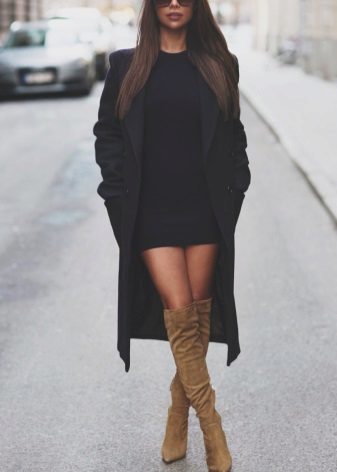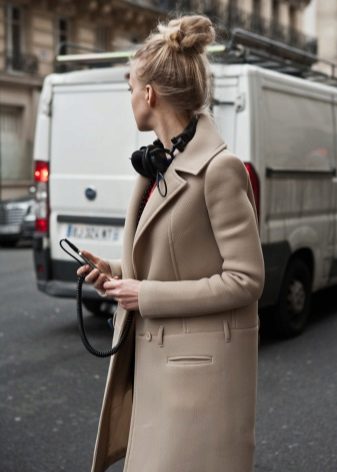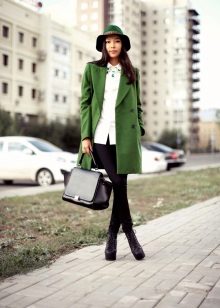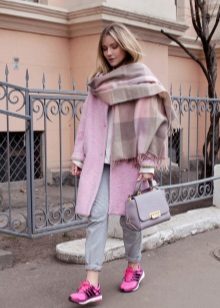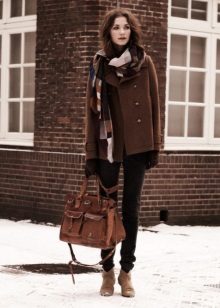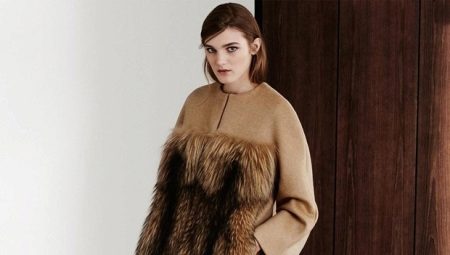Outerwear allows you to create completely new looks in combination with the already well-known and beloved things in the wardrobe. The variety in models allows you to choose the one that emphasizes the features of appearance and satisfy even the most picky taste.
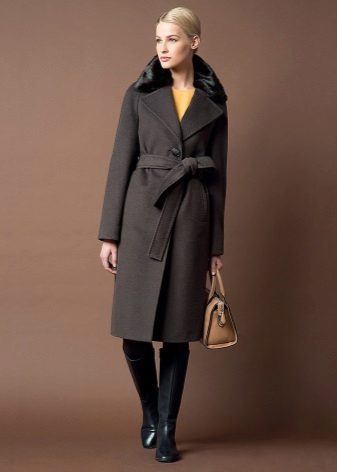
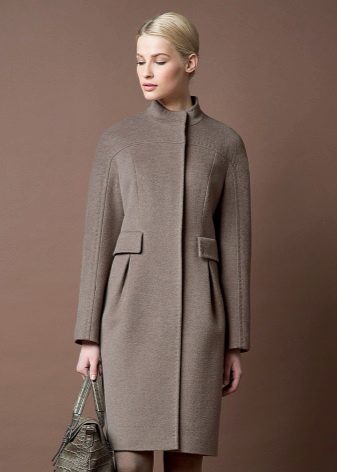
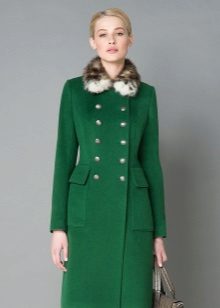
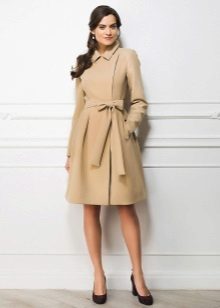
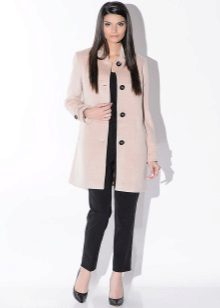
What is a coat?
A coat is a long outer clothing that allows you to protect yourself from the cold and bad weather. It went through a long history and underwent many changes from hoodies to military uniforms, and then went into modern fashion.

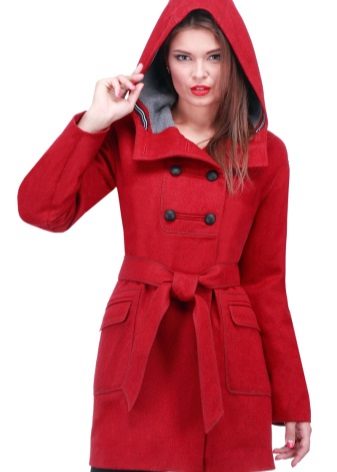
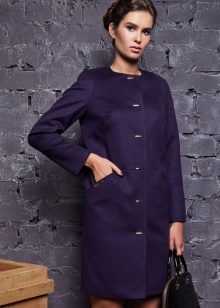
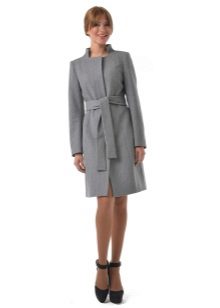
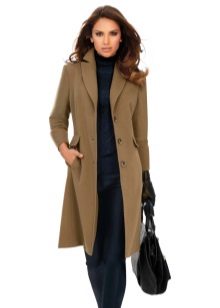
Coats are designed for warming in the cold season, but they are common even where the winters are gentle and are more like warm autumn.
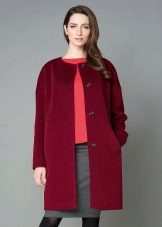
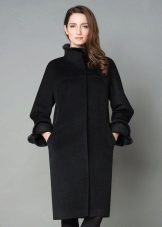

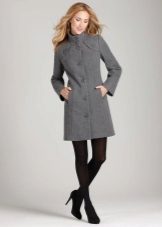
Due to the variety in styles, you can find a coat for both daily wear and for publication.
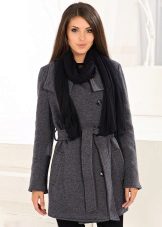
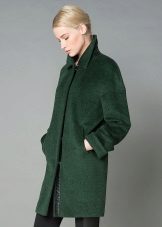
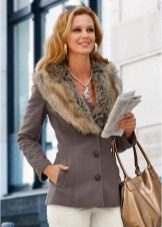
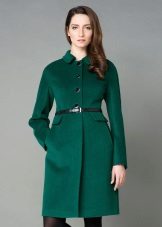
If the coat is a traditional long item, then the short coat is shortened. The short coat is usually no longer than the middle of the hips, it opens a view of the buttocks, otherwise there are no differences.
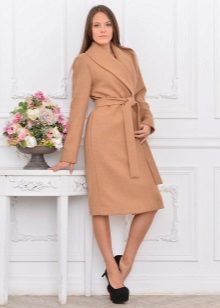

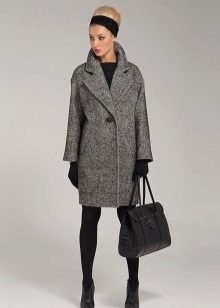
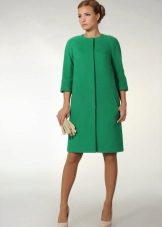
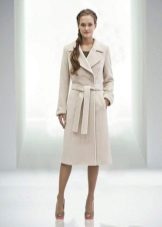
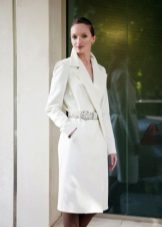
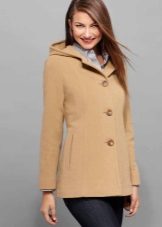
Types and Types
Coats are divided into three main types: single-breasted (one row of buttons), double-breasted (two rows of buttons), without buttons. In these three groups there are a huge number of models that differ from each other in many ways.


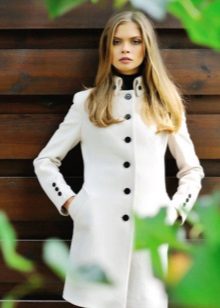

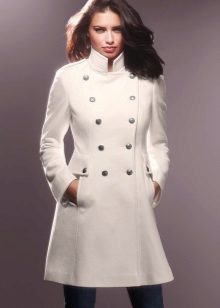
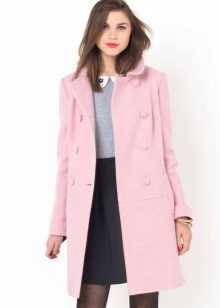
Single-breasted coats include: balmakaan, duffle coat, carpet, crombi. To double-breasted: alster, overcoat, trench, inverness, pea jacket. Coats that do not have a fastener: bathrobe, cape, stocking, mantle, blanket coat.
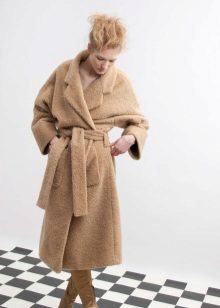
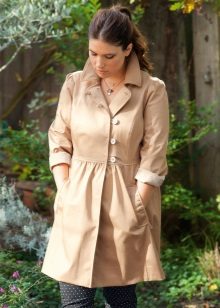
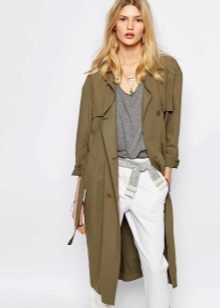
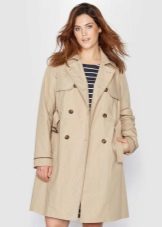
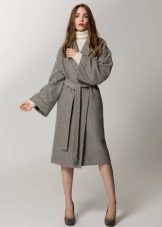

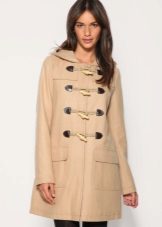
But the largest group is in coats, which are not tied to any particular species, and they can be presented in both single-breasted and double-breasted variations.
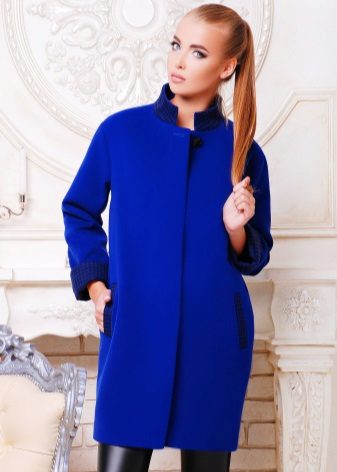
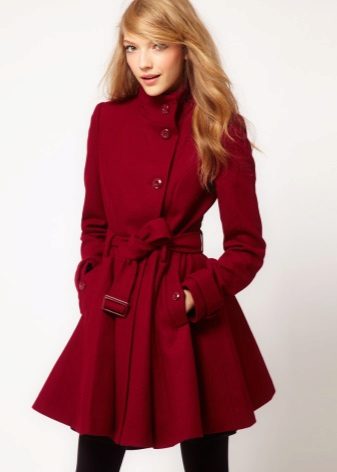
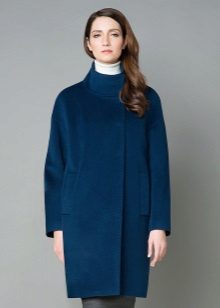
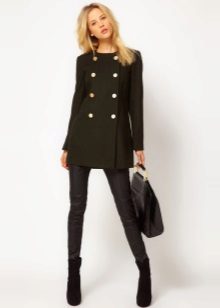
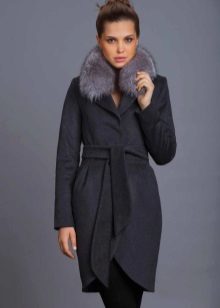
For example, this is a polo coat, cloak, coat-jacket, coat-jackets, coat-capes, coat-bottles and cocoons, coat-boxes, coat-flyers, coat-jackets.
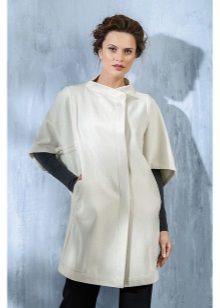
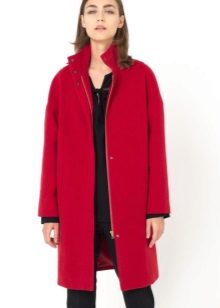
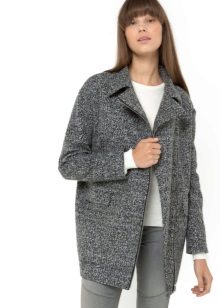
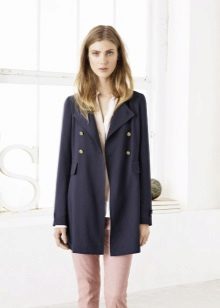
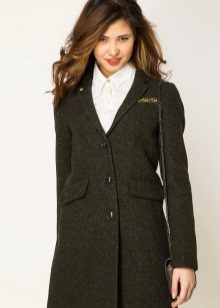
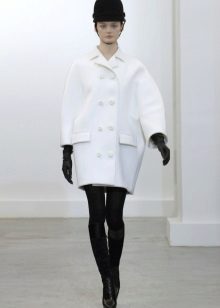
In addition, modern coats use not only buttons, but also rivets, as well as zippers. For example, coats, jackets, coats, jackets, coats, jackets can be zippered, and bomber coats with both zippers and rivets.
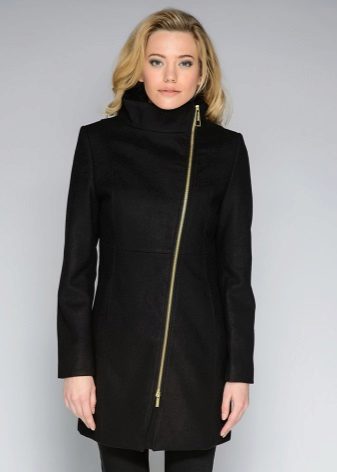

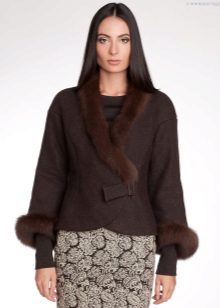
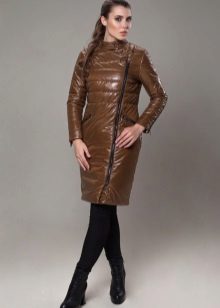
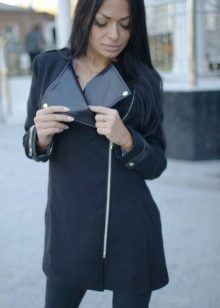
Models
The seasonality of the coat affects whether it will be thin or dense, with insulation or not, as well as how waterproof the material is. Many options can be in small details, such as pockets (patch, welt pockets, seam pockets), cutouts (rectangular, round, v-shaped or without them at all), the presence of a collar, lapels and hood, the use of decorative elements in the cut itself ( shuttlecocks, basque, belt).
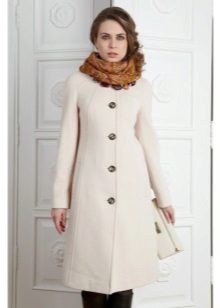
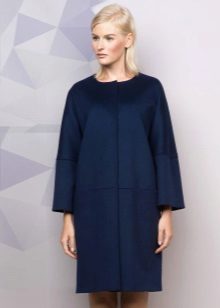
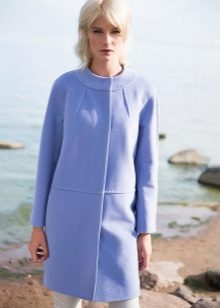
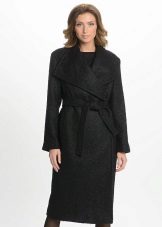
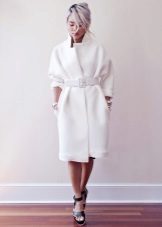
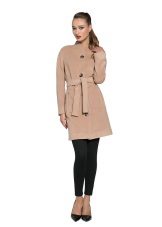
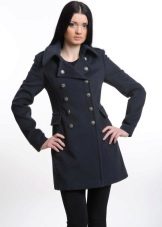
There is a non-standard interpretation of classical styles, and it is achieved by asymmetric forms, a lowered shoulder line, a high waist. Unusual is a double-sided doubleface coat.
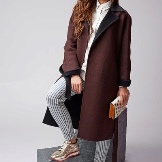
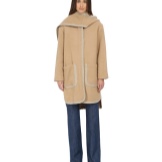
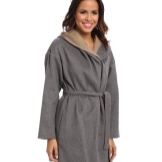
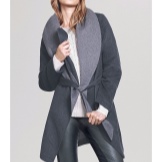
Styles
The classic style is one of the most concise, but elegant. Such coats have straight and simple lines, average length and only the most necessary modest details. Classic coats are quite strict in appearance, and the image is softened with pastel shades in the color.
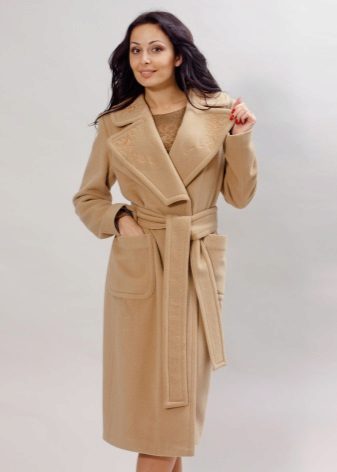
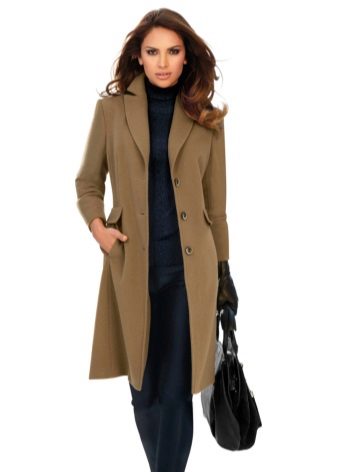
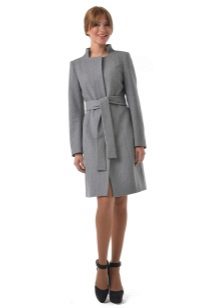
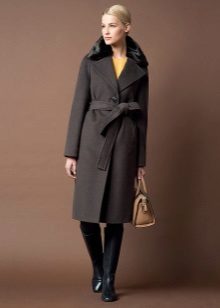

In contrast to the classic style can be called romantic. It is light and flying, even when it comes to outerwear made of thick fabric. Such decorative details as ruffles, shuttlecocks, peplum, lace are applicable in it. Such coats are most often light and may have a delicate floral ornament on them.
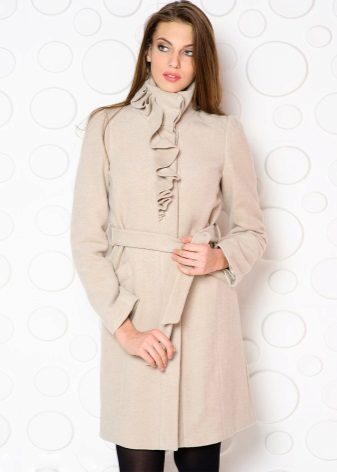
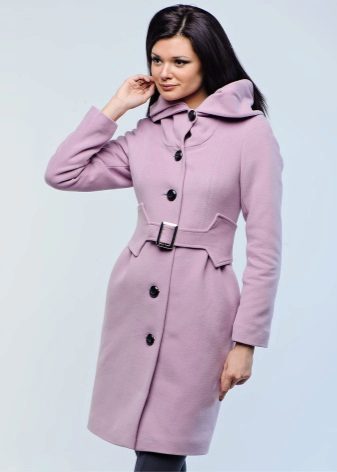
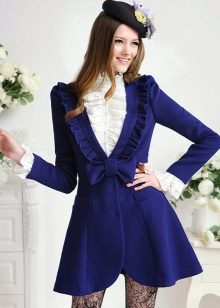
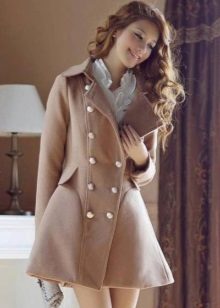
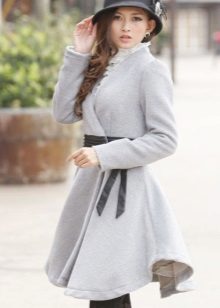
Casual style is concise, but free and voluminous. He has a simple look, suitable for creating daily urban images. Its main characteristics are comfort and practicality. The oversize style refers to it, when the coat is purposely larger in size than necessary in the figure.




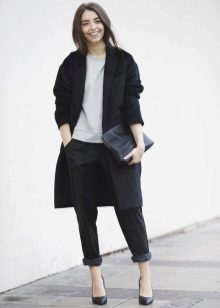

For lovers of everything unusual there is an extravagant style. In it, designers “come off” to the fullest just enough so that the coat, despite the unusual appearance, can be worn. Extravagance is achieved by asymmetric forms, catchy details, vibrant color combinations.
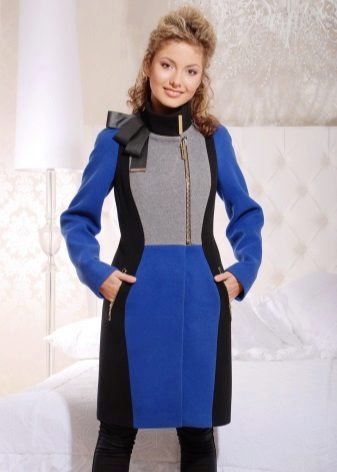

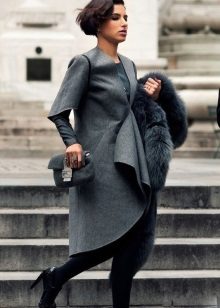
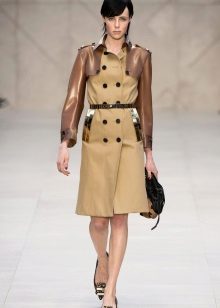
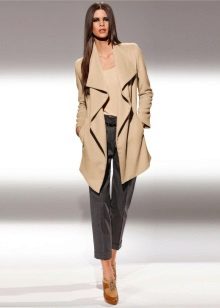
One of the varieties is the pop art style, which consists in the use of bright large prints and a combination of many colors. Pop art has a special style of drawings: pop culture in all its manifestations, from comic book heroes to drinks and food.
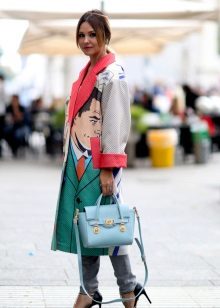
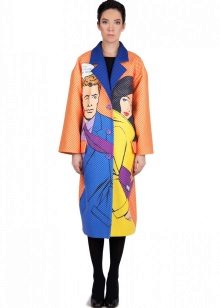
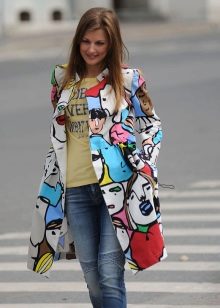
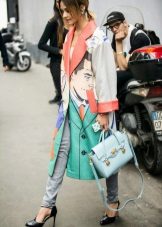
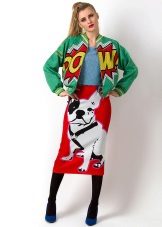
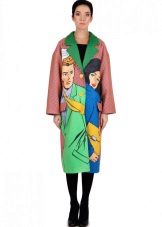

The constructive style involves the presence of decoration with strict geometric lines and shapes. Close to this style is a floor, in which multilayer and a combination of parts of different lengths are used.
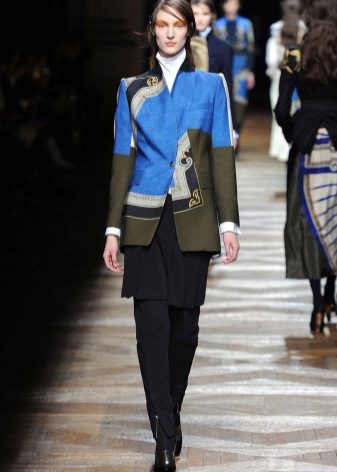
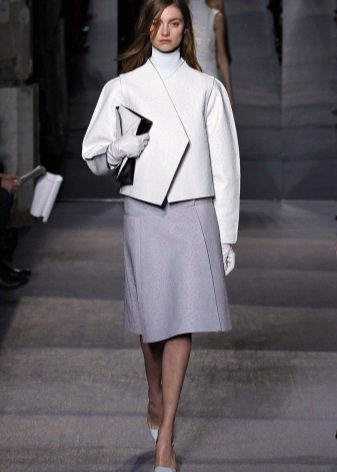
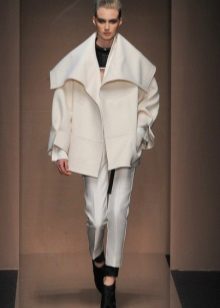


Ethnic and folklore styles use details from national costumes.
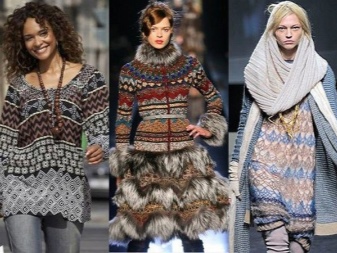
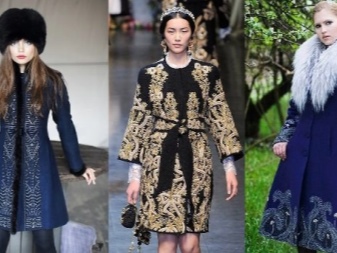
There is also an original Russian style, the characteristic features of which are color combinations (black or white with red, gold, green), prints (elements of folk crafts, for example, Khokhloma), decor (a lot of fur details), as well as styles (straight or flared down, like sundresses).
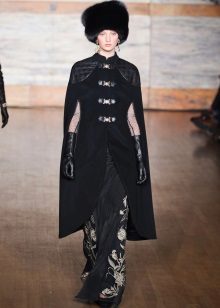


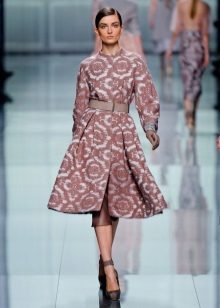
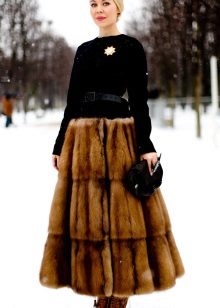
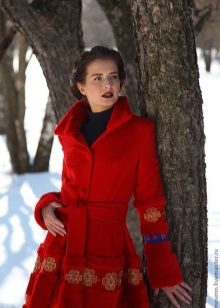
The style of military is pronounced. It requires the presence of elements from military suits, for example, lacing, shoulder straps, metal inserts. The styles are straight and a little rough.
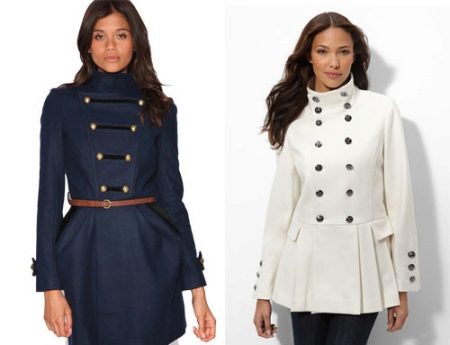
The colors are often dark, resembling a real military uniform.

Since history is cyclical, it is not surprising that retro style is in fashion. In the coat of the 60s style, trapezoidal styles are often found, strongly flared below, the cocoon style. A funny detail is bright lining with prints and ornaments.
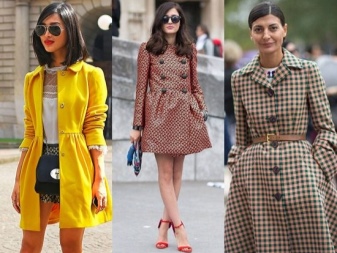

Patchwork style is the use of patchwork technique when sewing a coat. It is sewn from pieces of different fabrics, not only in color, but also in texture. A correctly made thing will look extravagant, but stylish.

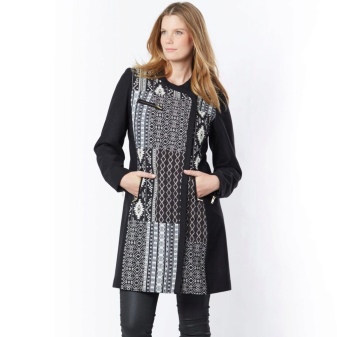
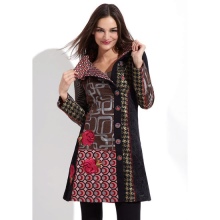
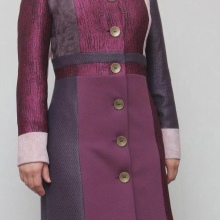

However, for this, the designer should have a good eye in color, otherwise it will turn out not a coat, but a rustic blanket.
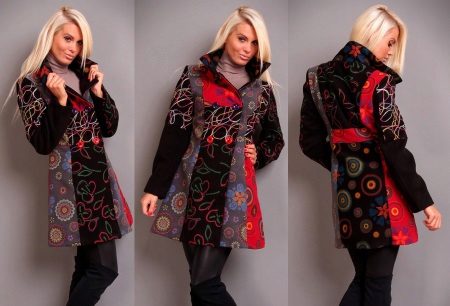
Coat silhouettes
The hourglass silhouette is fitted. Often, the emphasis on the waist also puts a strap or belt. Most often, the fitted coat expands to the hem, and the flare is both insignificant and quite voluminous.
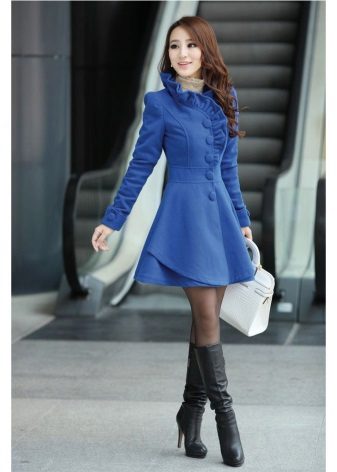

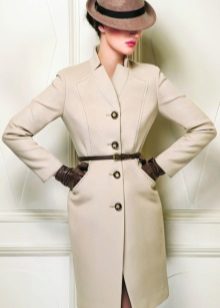

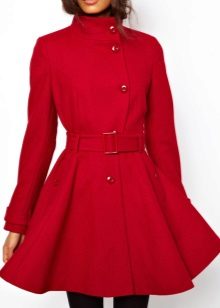
Another free style has a coat of O-silhouette. This is the so-called cocoon coat. It expands from the chest to the hips, and tapers closer to the hem again. The lines in this product are soft and smooth. The length is most often to the knee or slightly lower.

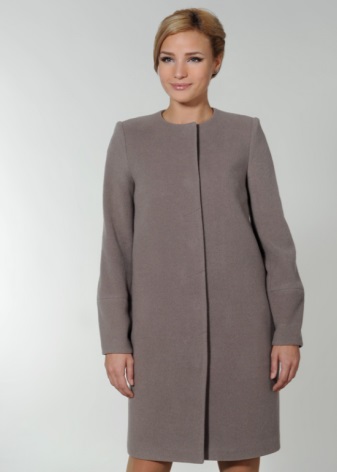
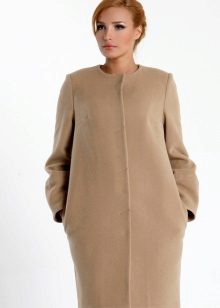
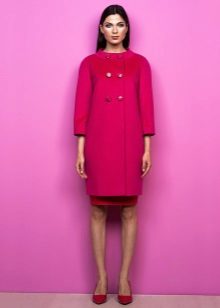
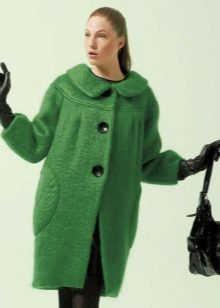
The A-silhouette, also known as a trapezoid, is narrowed at the top and flared down. To better reveal the charm of such a style with a wide hem, the length of the coat is most often average. A-silhouette well hides figure flaws, therefore, is popular.


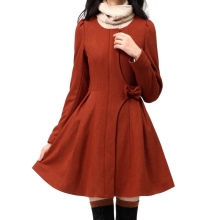
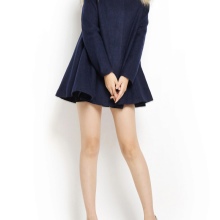
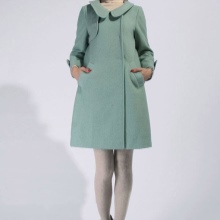
And, of course, it should be said about the straight silhouette, the coat-case. This coat has a rectangular shape. He has strict straight lines, there are no accents and extensions in certain areas.
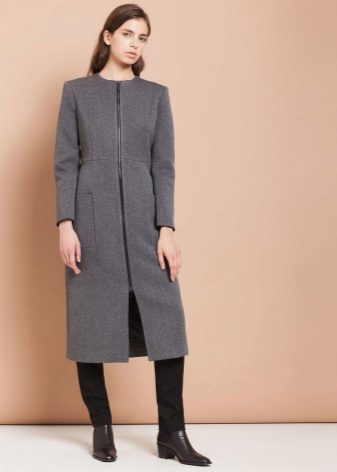

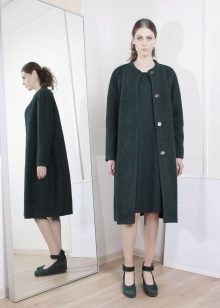
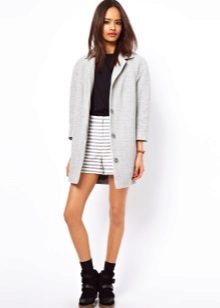
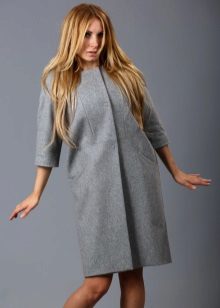
The length can be different, but most often it is medium, below the knee, or short, as, for example, in dufflecats.
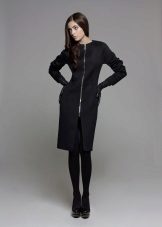
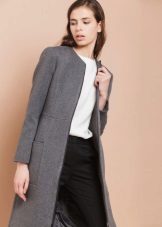
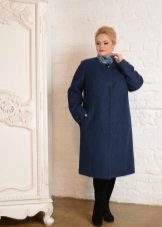
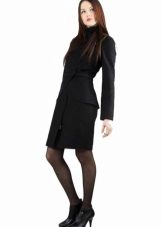
Types of collars on a coat
Stand Collar - a vertical collar up to five centimeters high. In more extravagant models, the collar height may exceed the specified limit. A tangerine-style stance is widespread when the collar fits tightly around the neck and its edges are connected in the middle or one part runs over another.
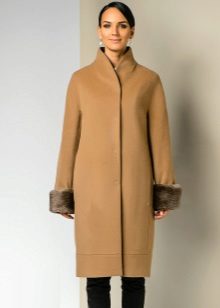
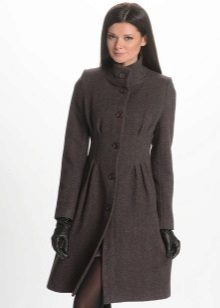
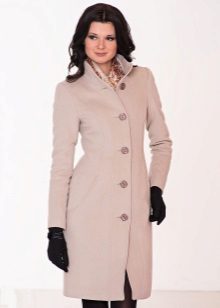
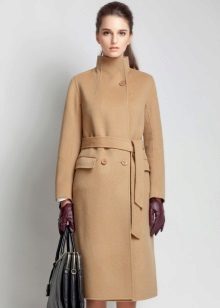
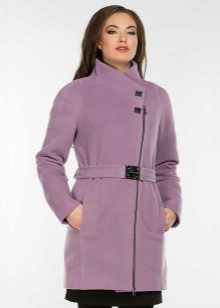
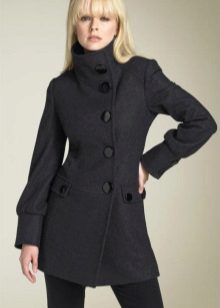
A turn-down collar is an open collar, the edges of which lie on the chest. Sometimes such a collar can be very small and barely move away from the neck, and on some models, on the contrary, so large that the collar can cover the shoulders. It differs in shape, for example, round or v-shaped.
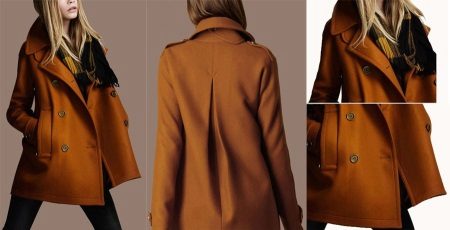
English or jacket collar. In this variety, the lapel is not only at the neck, but also at the lapel. This collar is quite deep, and therefore you should wear sweaters and sweaters with high collars or a scarf.
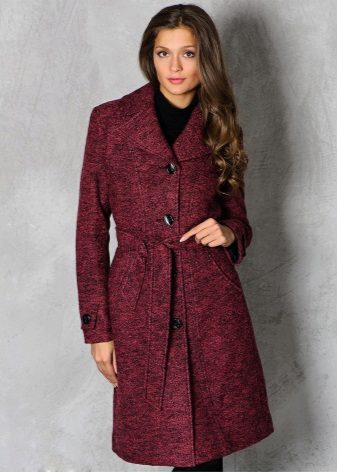
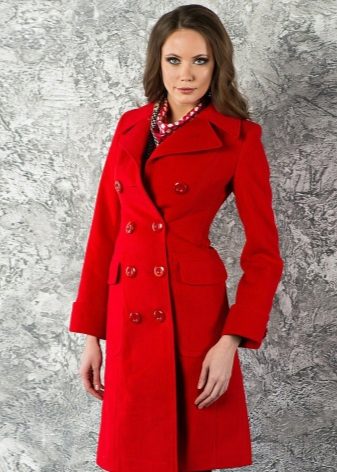
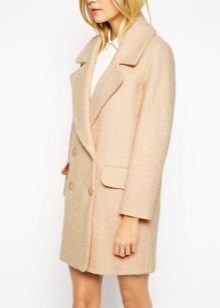
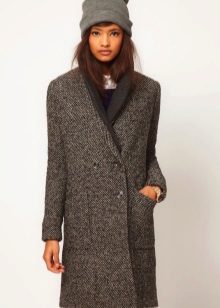
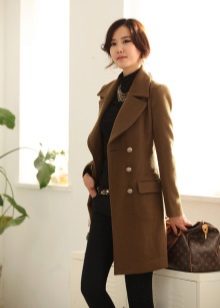
There are combinations, the so-called stand-up collars. Schalke is a one-piece collar. It is lined with picks, and its shapes can be different. The Apache collar is strong, wide and rectangular, with wide open lapels. There are no buttons or other fasteners on it.
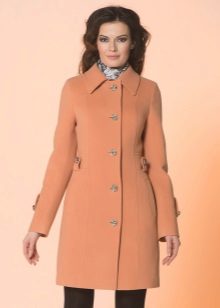
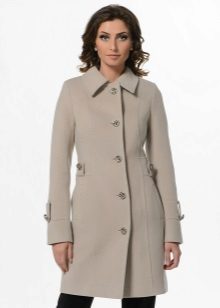
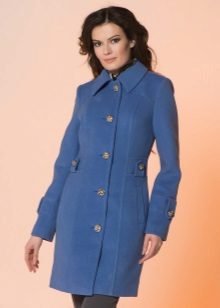
Sleeve
There are two main types of cut sleeves: one-piece and set-in. With a one-piece sleeve, it is one part along with a shelf and a back of a thing. There is no armhole line, due to which the shape of the shoulders and bodice looks soft and smooth.

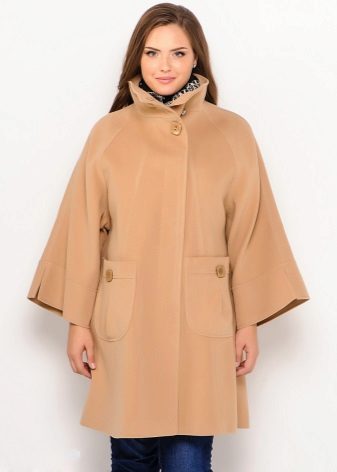
The set-in sleeve is just sewn to the armhole, where the shoulder passes into the arm.
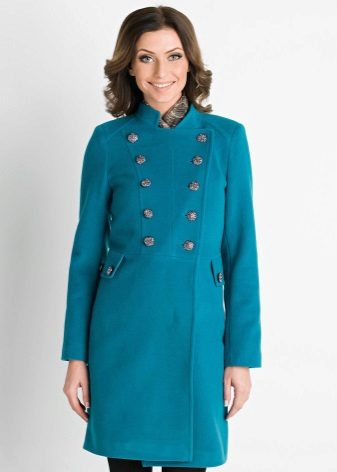
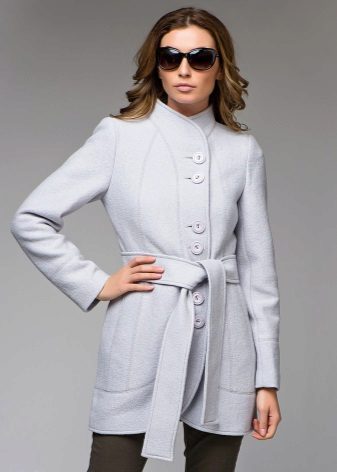
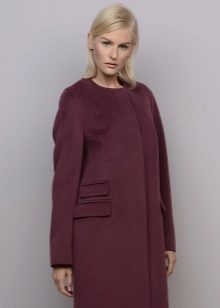

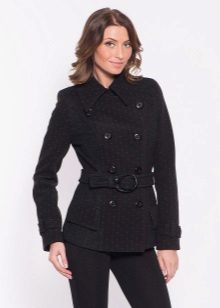
The styles at the sleeves are different and differ in shape, height of the shoulder line, degree of fit, length, cuffs. Coats are popular for deflated sleeves, in which the seam is below the shoulder line and its transition into the arm.


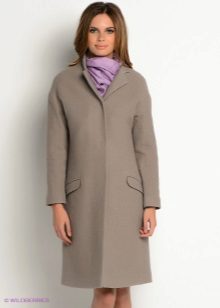
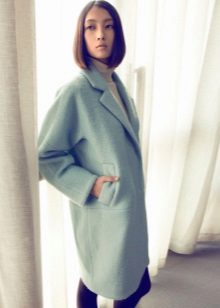
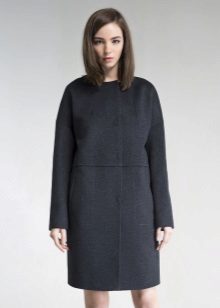
They are well suited for creating oversized models.
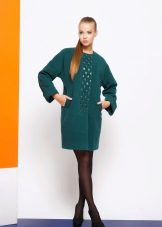
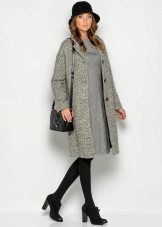
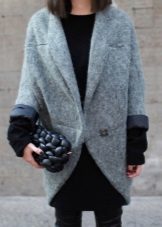
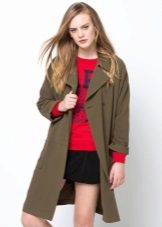
There are raglan sleeves, they are sewn to the neck, as they are initially cut out along with the shoulder part.
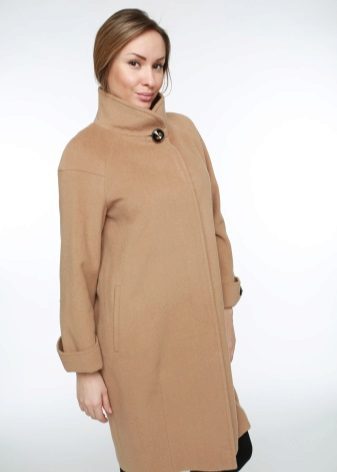
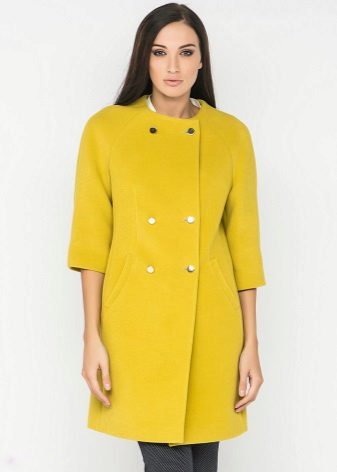
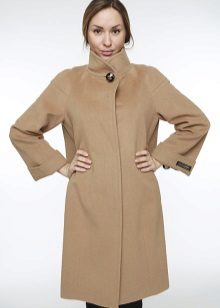

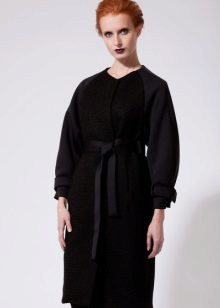
Three-quarter sleeves are popular on demi-season coats, with lengths just below the elbow or middle of the forearm. Sometimes the sleeve is completely absent, but since we are talking about outerwear, then most often it is long to warm enough in autumn and winter.
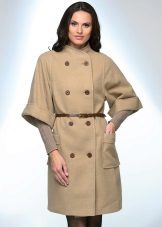
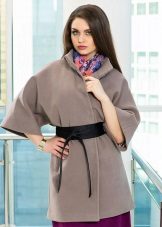
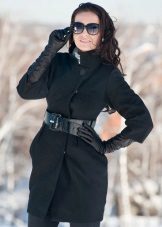
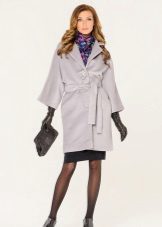
As for the degree of fit, the most popular are the straight sleeves and sleeves of the bell, flared closer to the brush. There is a kimono sleeve that becomes wide down and does not have cuffs at all.
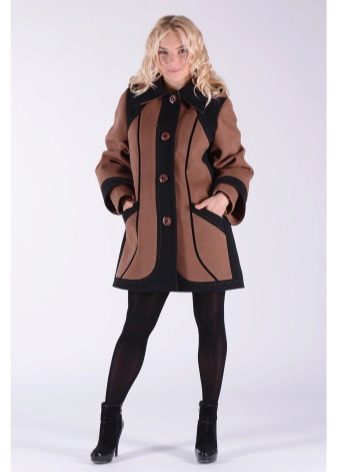
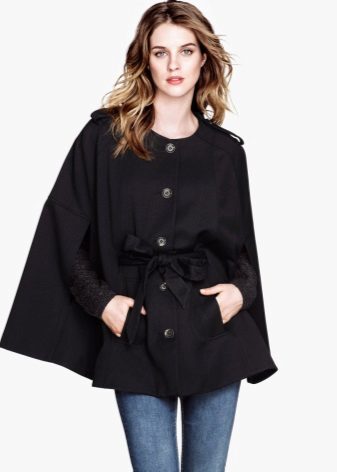
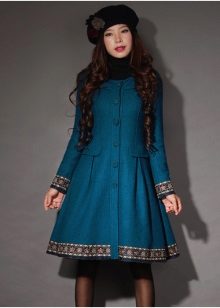
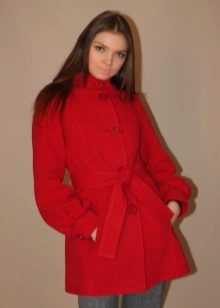
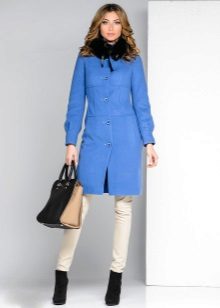
Clasp
The most popular fastener for a coat - buttons. They are used not only for practical purposes, but also for decoration. A product has both one and two rows of buttons. Most often, these are plastic or metal buttons, and wooden canines in the shape of a canine are very popular on duffle boats.
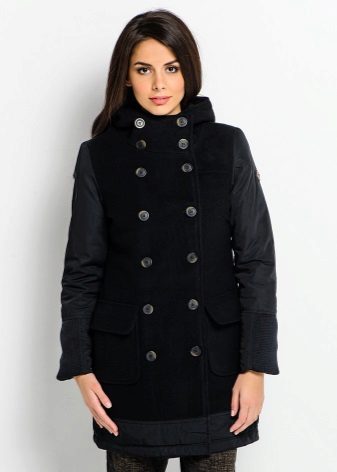
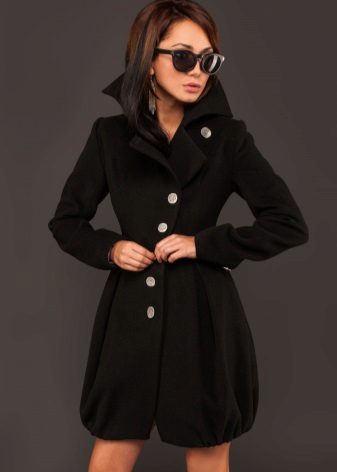
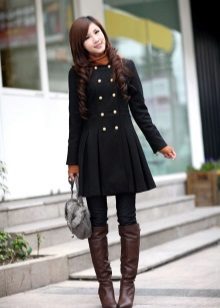
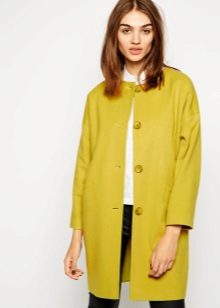
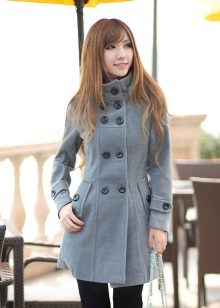
The hinges can be either cut out on the sides or sewn to them.The number of buttons also varies - sometimes they go along the entire length, sometimes end in the waist area, and on the coat-capes there is only one button on the neck. On some models there are hidden buttons hidden under the board.
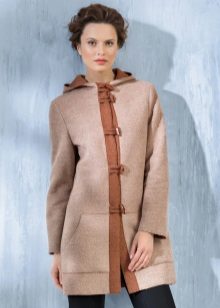
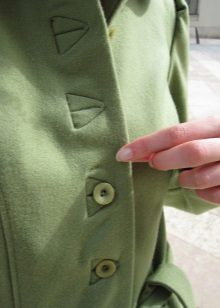
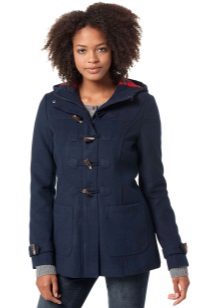
Hooks are used less often, since they do not provide a snug fit between parts of the coat to each other. Rivets are also found on quilted coats. They can also find zippers in sports informal coats.
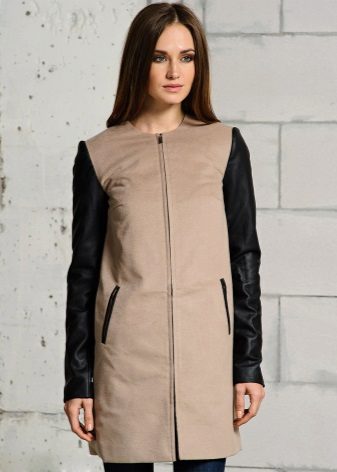
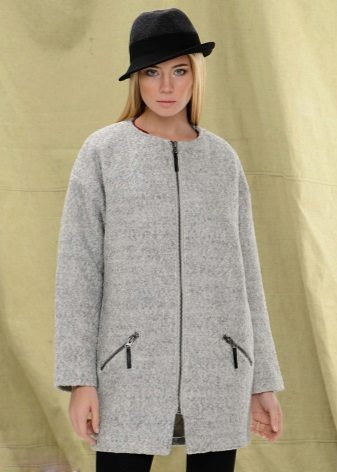
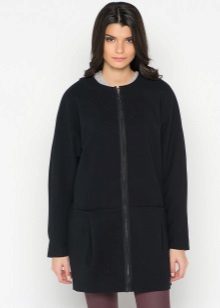
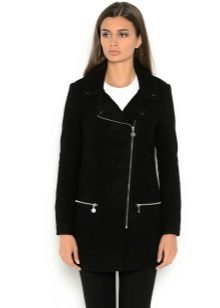
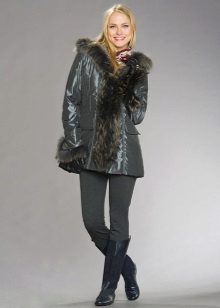
There is a coat without fasteners at all. This is a coat-dressing gown with a smell and a belt. There are no buttons on coat-cloaks, on which they fulfill only a decorative role.
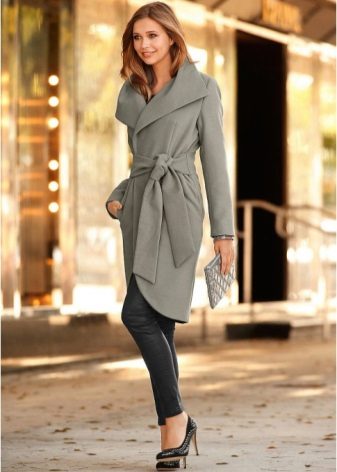
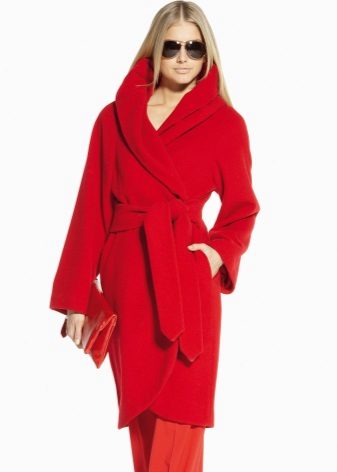
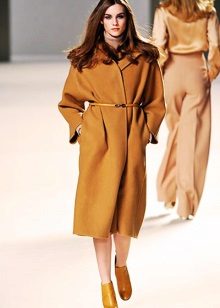
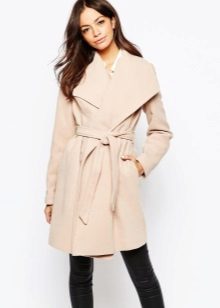
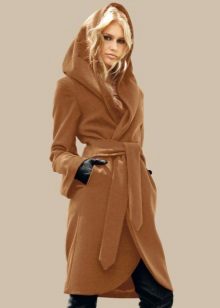
Length
Short coats end on the hips line (mostly in the middle, but the length can vary).
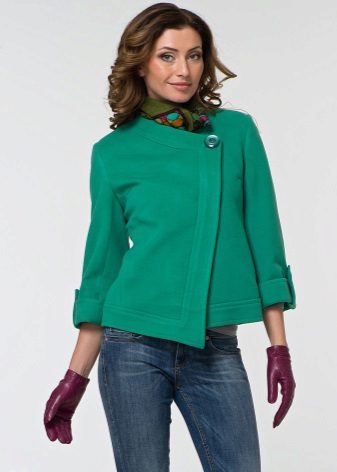
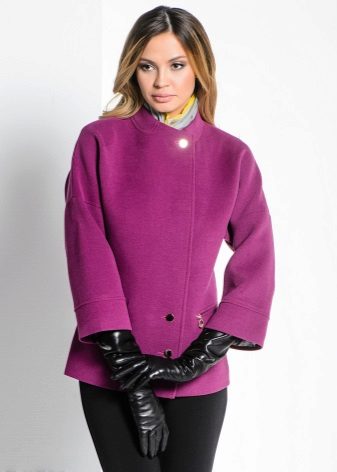
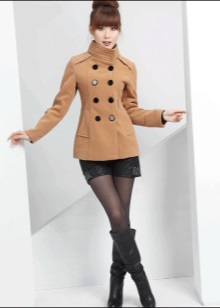
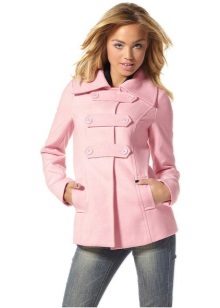
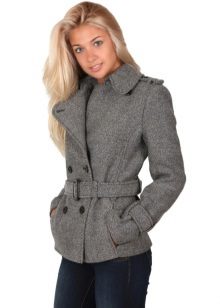
The average coat length is the most common. It allows you to wear business skirts and at the same time heats well. In addition, it is midi that is the trend of this year. It is believed that the coat is medium in length when the hem ends at the knees.

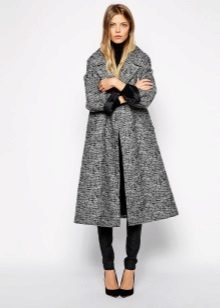
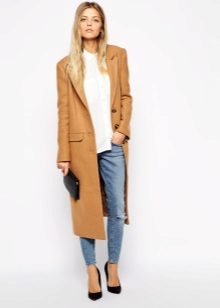
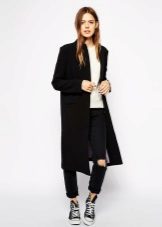
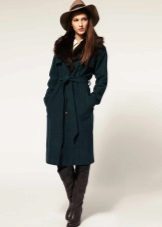
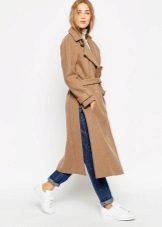
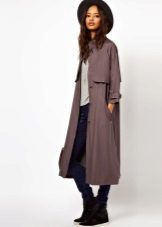
Long coats are not always practical, but they are no less common than the other two types. Long coats end in the calf area. Separately, it is worth highlighting the length of the floor, it is also called "maxi".
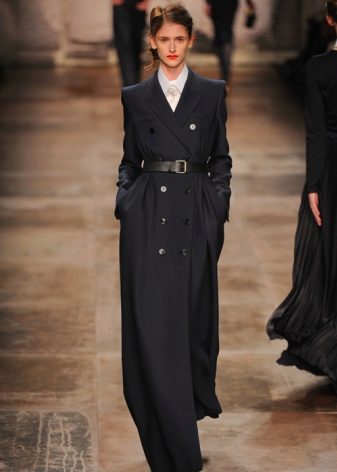

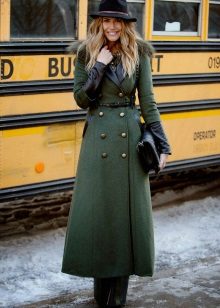
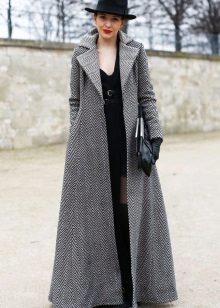

Very fashionable this season, but not very practical.
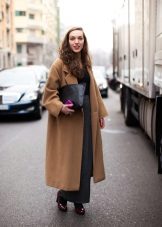
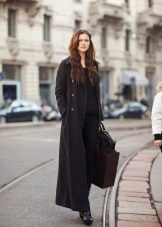
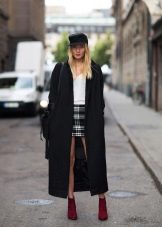
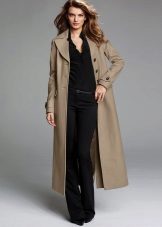
Coats for women after 50 years
Women after fifty, like queens, must look majestic, neat and very expensive. Moreover, the "high cost" is not in the price tag, but in the quality of materials, noble colors and correctly selected models.
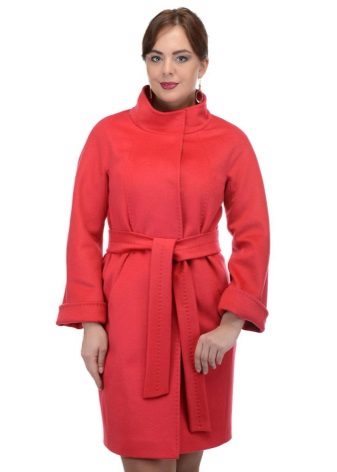
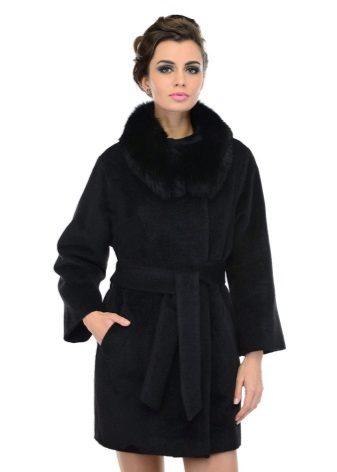
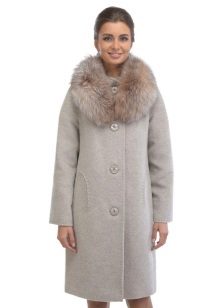
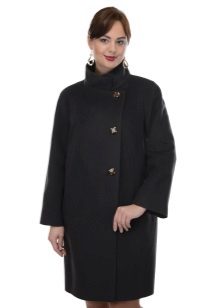
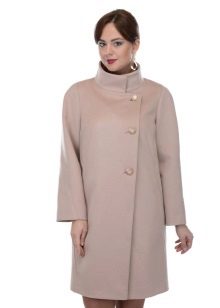
Youth rebellious styles with flashy decor are definitely not suitable for a real lady. But in general, they can afford both classic and oversized models. Volumetric coats, coat-dressing gowns, coat-capes have a free cut, which means that they will help to hide the flaws of the figure.
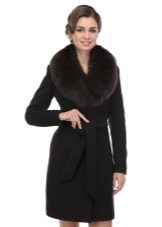
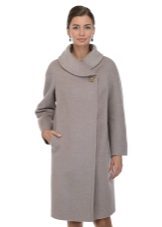

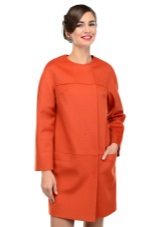
For those who have nothing to be shy about or who, on the contrary, want to demonstrate the silhouette of their beautiful figure, fitted classic coats are suitable. A straight silhouette will also be suitable.
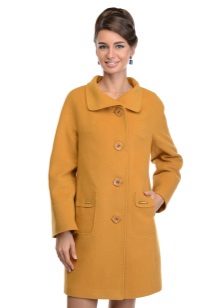



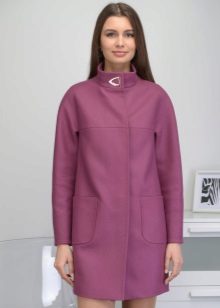
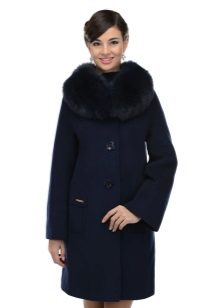
As for the length, everyone should choose the most suitable option for growth and taste. The same applies to the length of the sleeve.

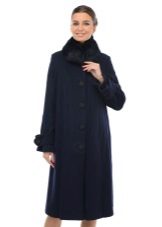
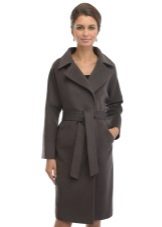
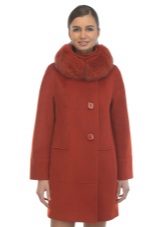
Of course, the most elegant look coat from natural materials. They are not affordable for everyone, but you should still strive for a larger percentage of wool, not synthetic additives.
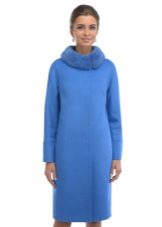
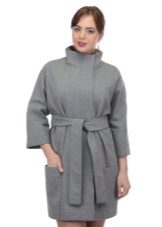
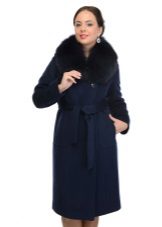

A coat of cashmere, camel hair, alpaca, astrakhan, all of them will look good on a woman after fifty. A faux fur coat that has become popular will also work, but you should choose a short pile and a neutral color.


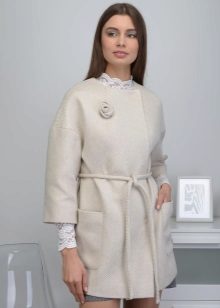
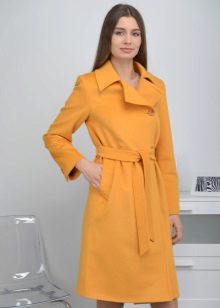

Best of all, plain coats of saturated, but not bright colors. For example, emerald, bottle, dark blue, wine, chocolate. The colors that are more familiar to the coat are suitable, for example, beige and brown, gray, black, pink.
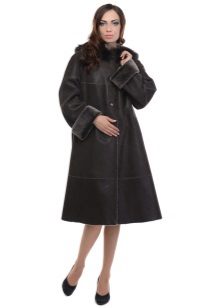
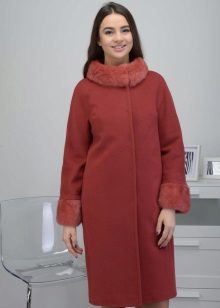

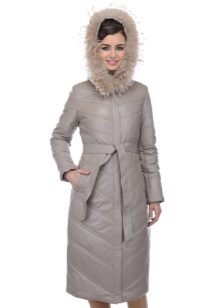
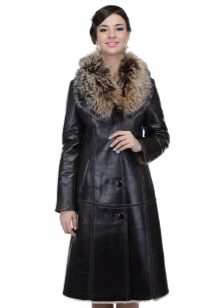
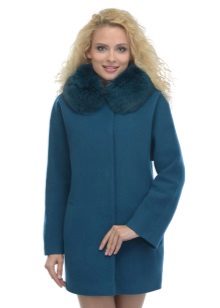
For full
A trapezoidal coat is suitable for full girls, since it hides all the flaws well thanks to its flared downward style.
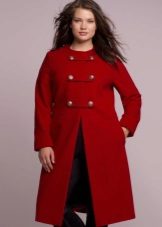


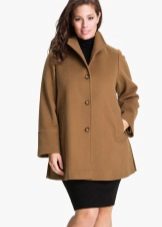
Sometimes it expands from the chest line or from the waist line, so the choice depends on which part of the figure you want to hide.
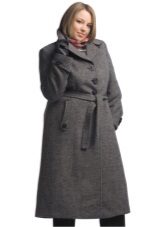

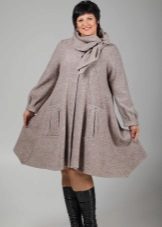
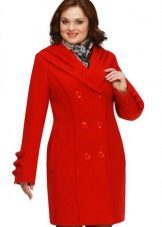
The material from which the coat is made matters. The priority is tweed, drape with a pile and fabric made under the scribble. Heavy materials should be abandoned, since in a coat of them you can look more heavily. Moderate length - to the knee or to the calves, but not to the floor.
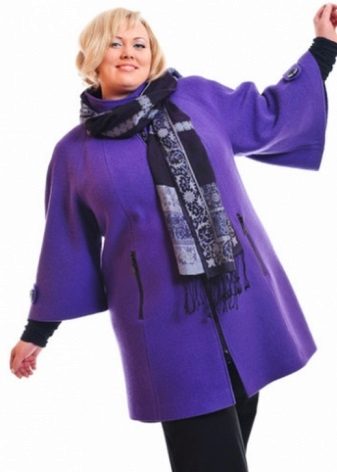
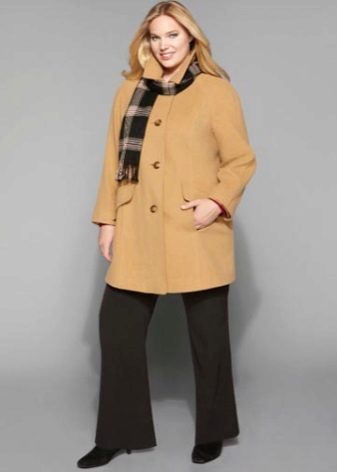
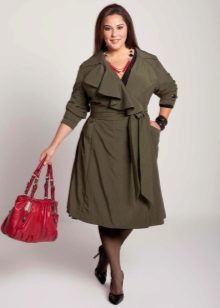

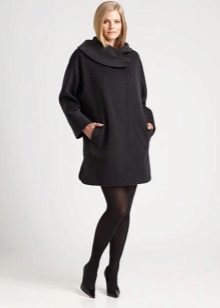
Full clothing does not have to be black, although admittedly, this color best visually reduces volume. Classic dark gray and brown colors, saturated green, blue, burgundy will do. As for the decor, it should be less on those parts of the figure that you want to hide.

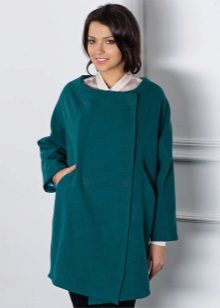
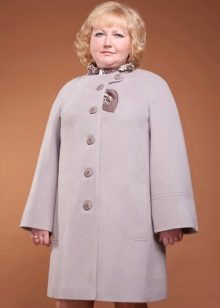
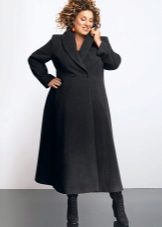

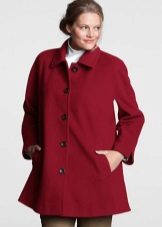
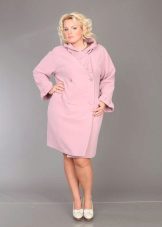
Fashion trends and stylish news 2016 - 2017
One of the main trends was and will remain an oversize coat, and it is best if he has long sleeves, large collars, wide lapels.Do not be afraid that the product, in fact, is a couple of sizes larger than required, because oversizes are ideal for everyday looks.
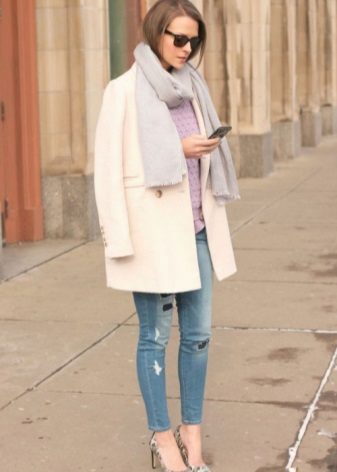
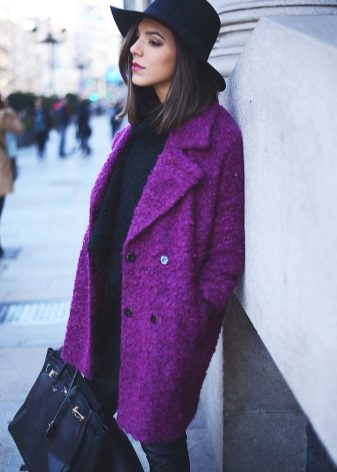
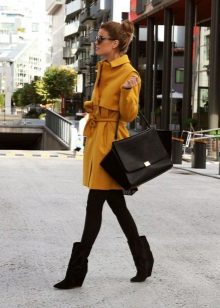
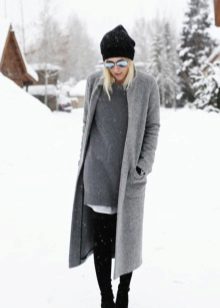
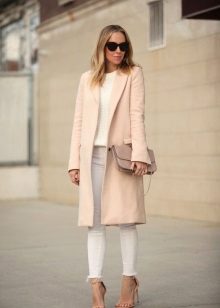
Classic single-breasted, less often double-breasted coats do not go out of fashion. The style is straight and trapezoidal. Hidden clasp models are popular. Actual length is short and elongated.
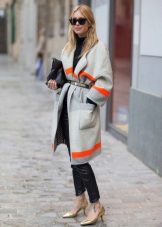
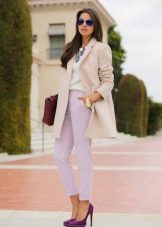
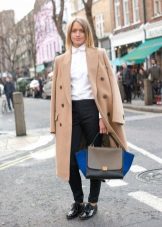
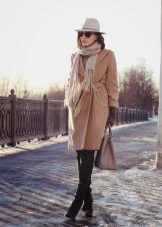
Coat wraps and capes, a poncho knee-length and below will be fashionable. Most often, a sleeve is appropriate, although there are some models without them. Quilted puffy coats continue to be held in fashion trends.
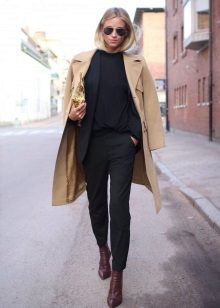
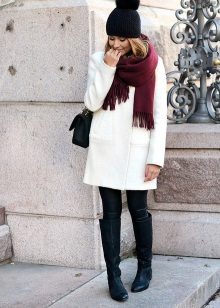
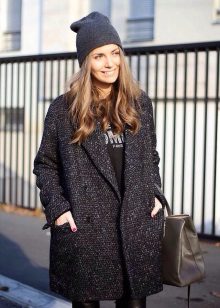

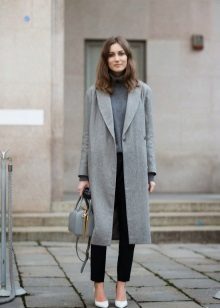
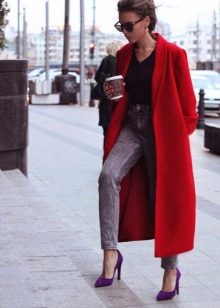
This time, the unusual shape and size of the stitches will be distributed.
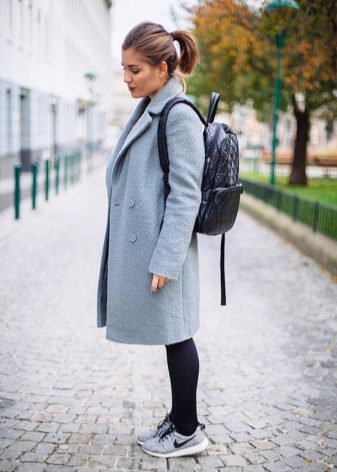
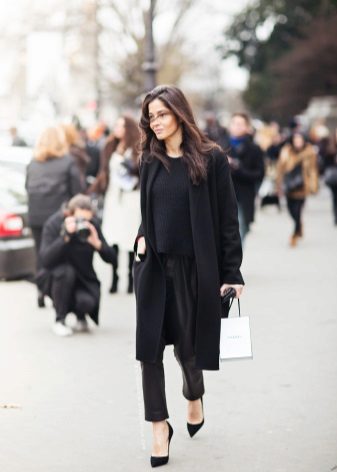
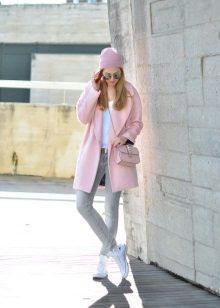
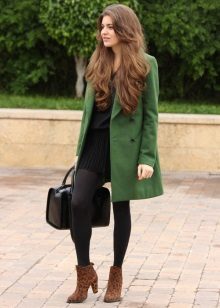

Coats are sewn from a large number of fabrics. In addition to woolen and drapery classics, tweed, leather, fur will be in fashion. Moreover, the fur coat can be made completely or it can be present only on some details.
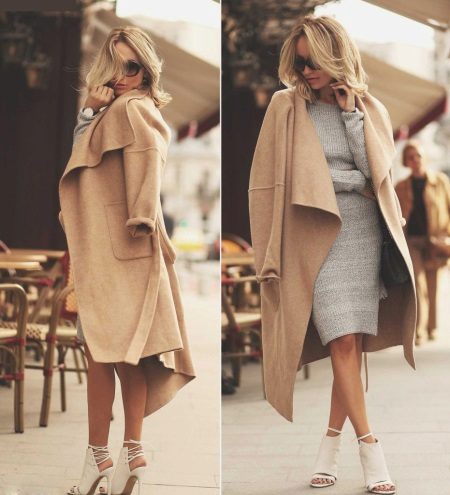
Out of time there is a black coat, especially in combination with classic models. But this season, the trend will be white, pastel shades, and, conversely, bright: fuchsia, orange, purple.
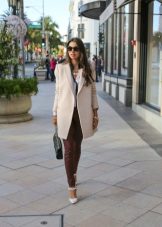

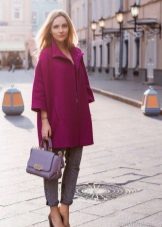
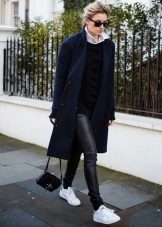
Traditional gray and brown colors and their shades do not go anywhere.
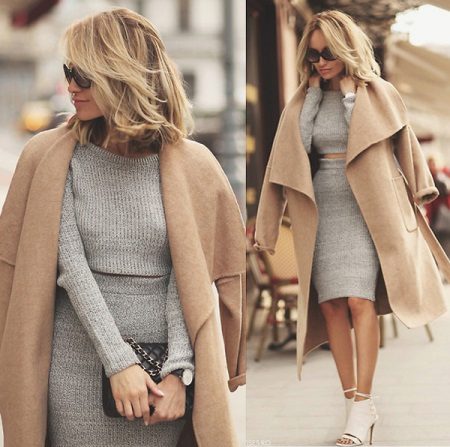
Among the print leaders are the cage (any color combination and size, the order of alternation), animalistic motif in unnatural colors (for example, purple leopard spots), floral ornament and ethnic plots.
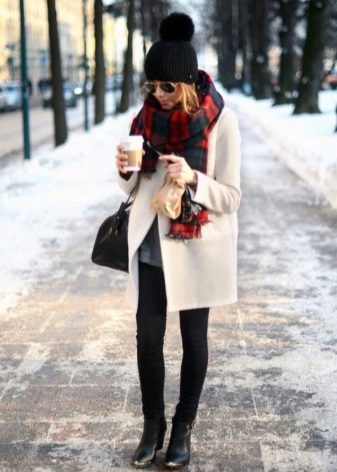
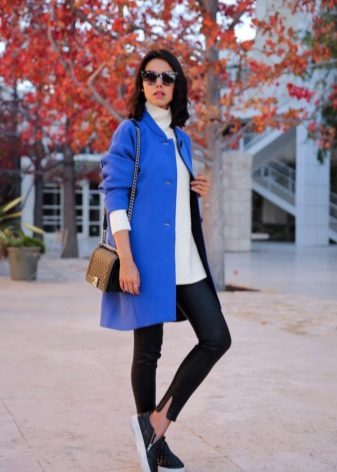
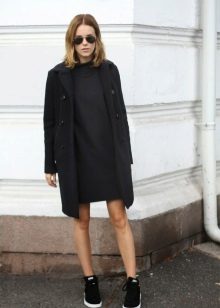
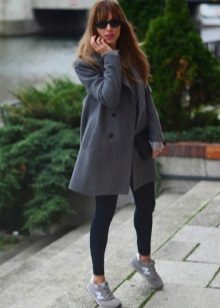
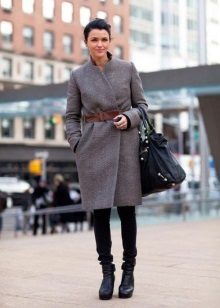
Material
Woolen materials are dense, natural (sometimes with the addition of artificial fibers) and with good thermal insulation. These include: gabardine, diagonal, crepe, boucle, tweed, vigon, cashmere, drap, ratin, flacome, beaver, bike, velor, cloth, jersey; felt, loden, felt (felted wool).
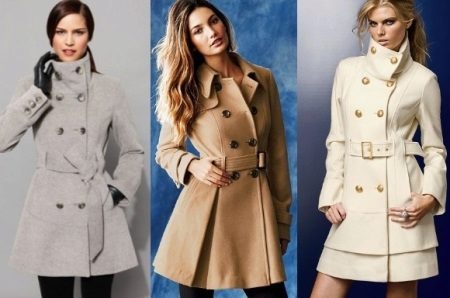
Lighter coats are made of cotton fabrics: moleskin, velveteen, velvet. Unnatural fabrics for coats: Bologna, polyester, raincoat fabric, fleece. Mixed composition in materials such as jacquard, plush, lace.
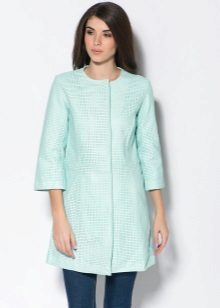
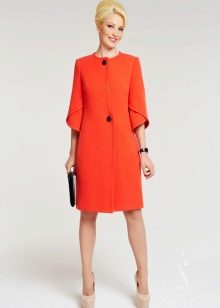

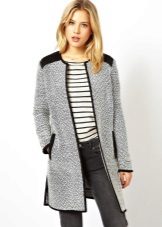

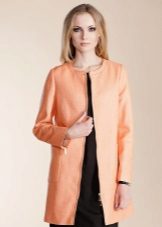

Coats are also sewn from non-traditional materials for this outerwear: sheepskin, fur and leather (artificial and natural). There are also knitted demi-season coats made of thick yarn, mohair, grass (fleecy yarn).

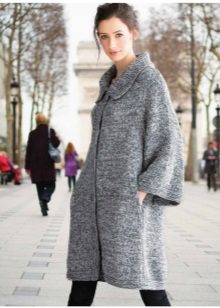
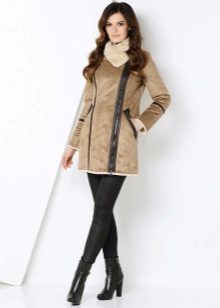
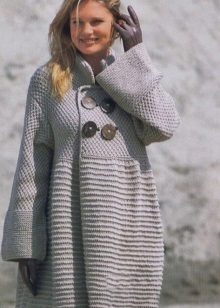
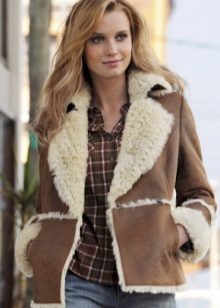

Insulation
To insulate the coat, a lining is used, and on top is a lining. In lighter models, only the lining, which is sewn from polyester, nylon, viscose. The most durable are polyester and nylon.
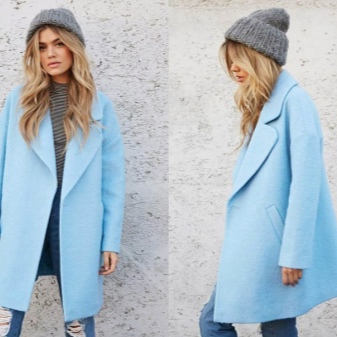
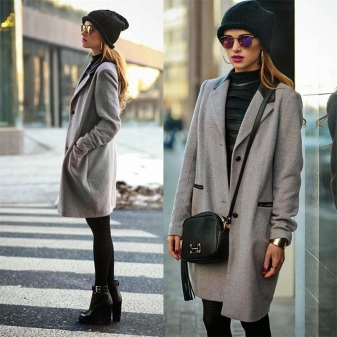
The lining is most often made plain in the color of the coat or, conversely, in contrast.
A pattern with floral and geometric ornaments is allowed.
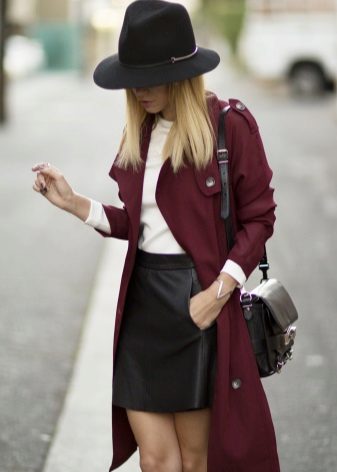
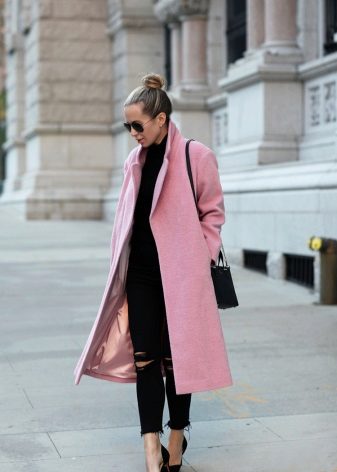
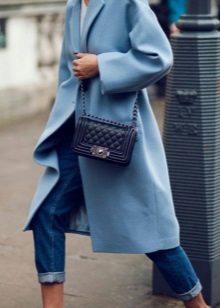
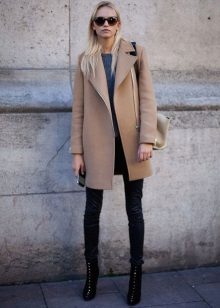
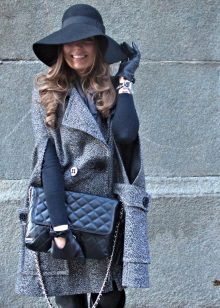
The most popular insulation is synthetic winterizer, but not the best. This is a heavy material compared to others; moreover, it will be heated only if the thickness is sufficient for this.
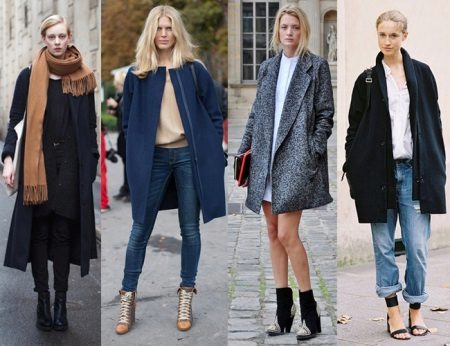
Sintepuh is a synthetic fluff made of polyester impregnated with silicone. It is voluminous and thick, but soft, light and environmentally friendly. Unlike natural fluff, it does not roll after washing.
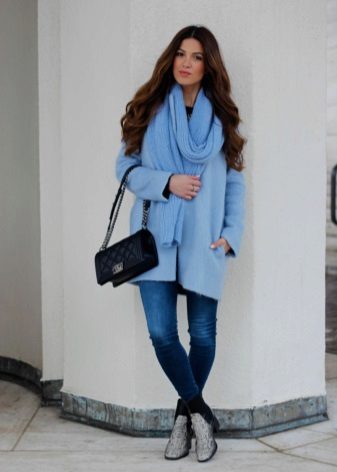
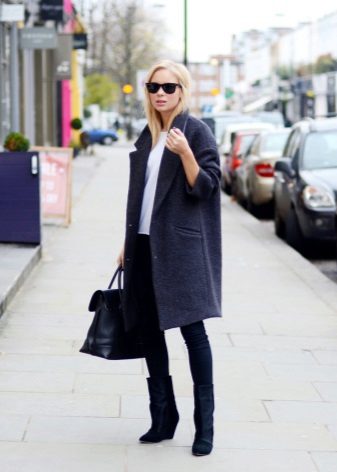
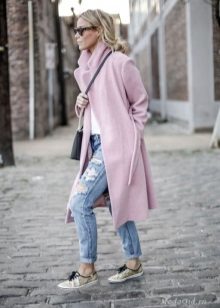
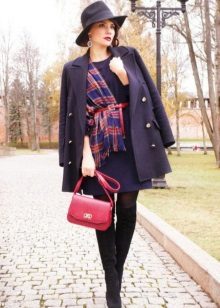

Hollofiber is a non-woven material made up of polyester fibers. It is very warm and does not crease, light, soft, thin enough. Thinsulate is a warm material, despite its small volume and thickness.
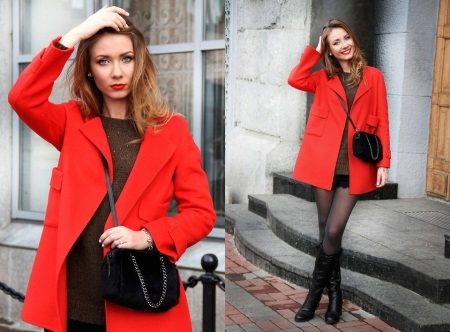
It is the lightest and thinnest of heaters, unpretentious and dries quickly. Therefore, along with the synthetic fluff and holofiber, it is in modern times the most used material for the substrate.
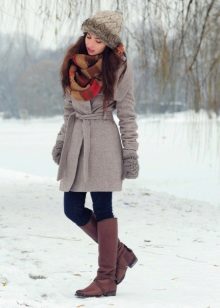
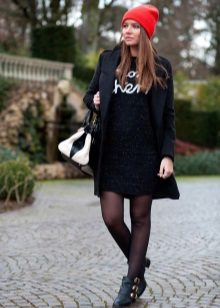
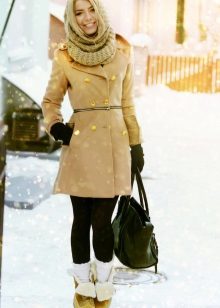
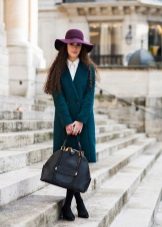
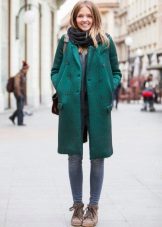
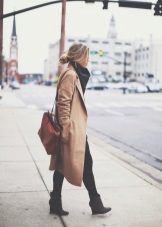
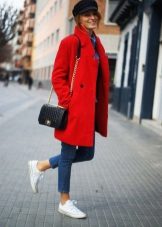
Color and print
The most common color schemes for coats are black, gray, beige and white. They do not go out of fashion and are used to create both business and youth images.
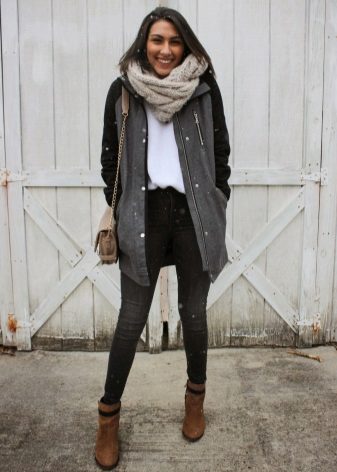
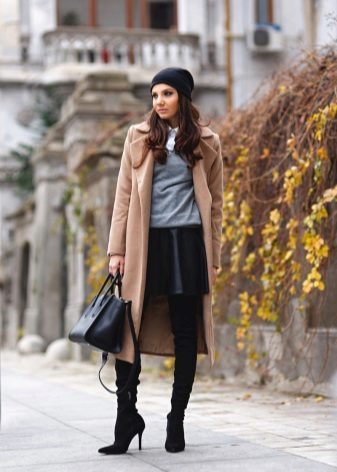

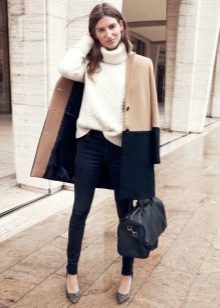
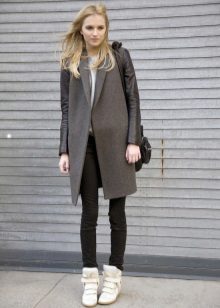
In addition to the basic colors, mustard, ocher, orange, brownish-golden, and blue are also common. From time to time, bright or, conversely, pastel colors become fashionable: lilac, mint, emerald, fuchsia, pink, metallic.
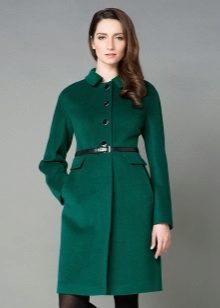
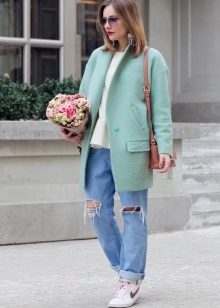
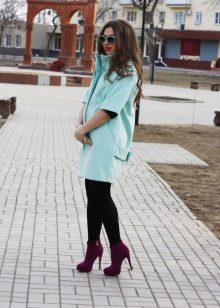
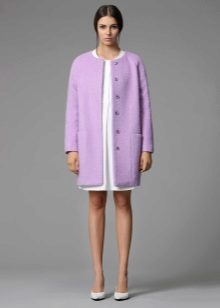
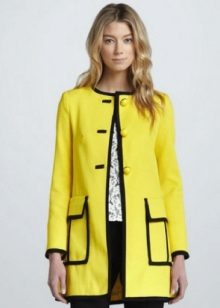
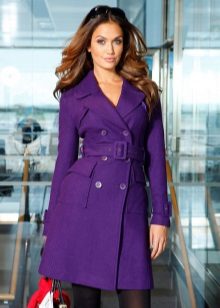
Often you can see two-tone coats, for example, black-and-white, red-black, violet-yellow.
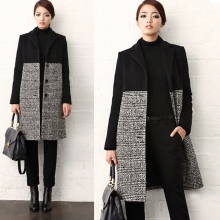
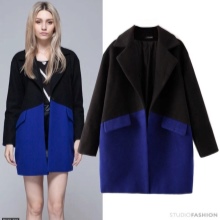
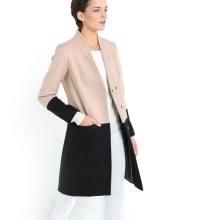
Print is one way to decorate the material. The most used motifs are geometry (cage, stripes, complex shapes, goose foot), flowers (large and detailed, or small patterns with petals).
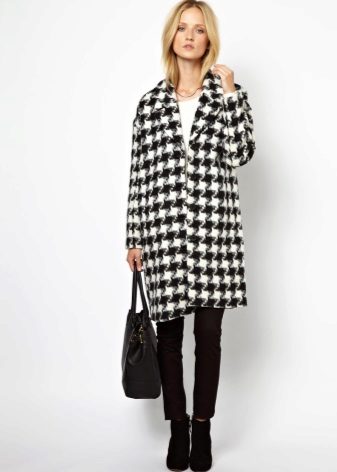
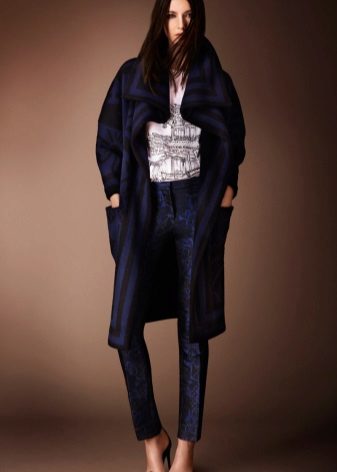

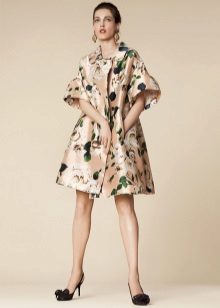
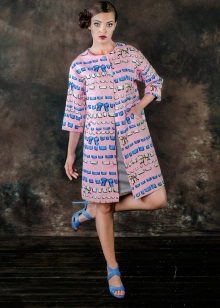
An animalistic pattern imitating the coloring of animal skins: tigers, zebras, leopards is in fashion.
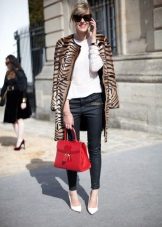
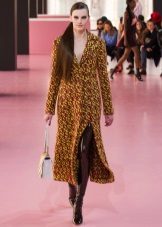
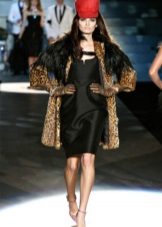

Decor
All kinds of stripes, prints, as well as decoration with other materials are used as decor for outerwear.
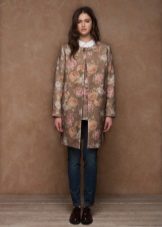
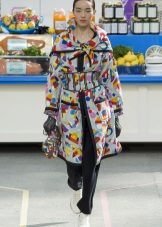
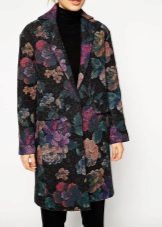
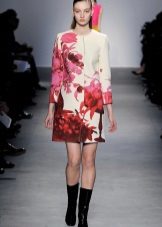
With the help of embroidery and appliques, you can lay out whole ornaments and bright patterns. Pebbles, beads, metal parts, buttons emphasize one or another style of the product, draw attention to the part of the coat to which they are sewn.
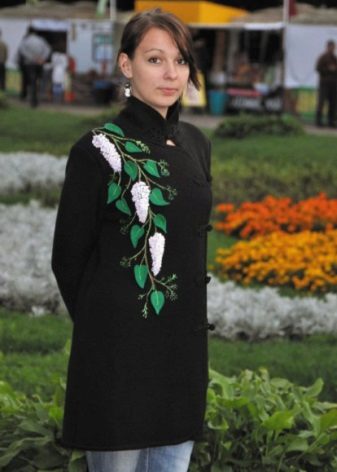
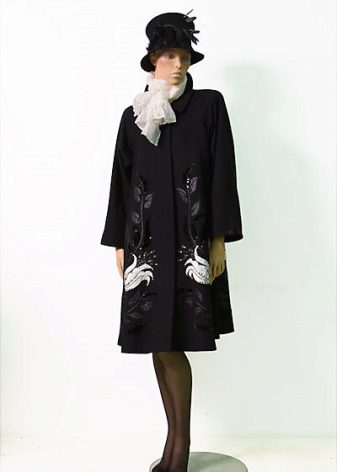
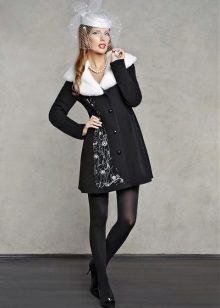
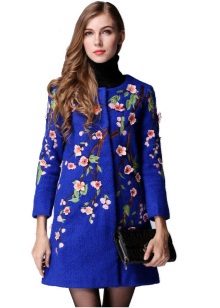
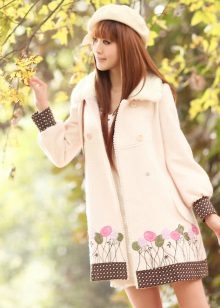
Sometimes the details of the coat are an adornment, for example, leather sleeves or leather inserts on them look very stylish and bold. Fur is in fashion, so it is often found on the collar, pockets, hood, cuffs and hem.
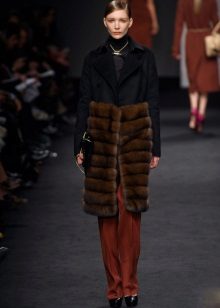
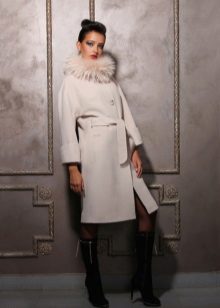
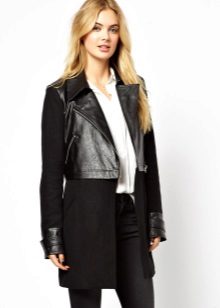
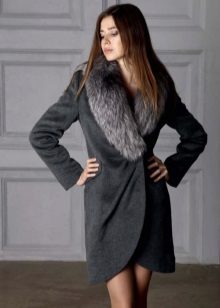
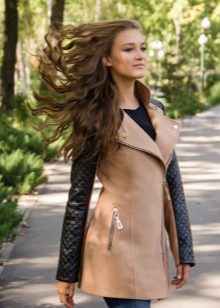
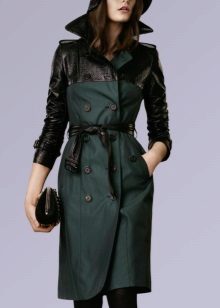
The fur is taken both artificial and natural, for example, from polar fox, fox, hare.
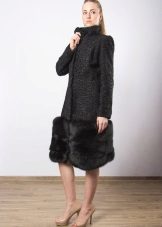
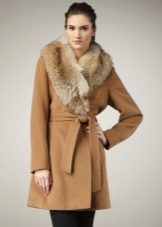
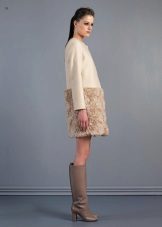
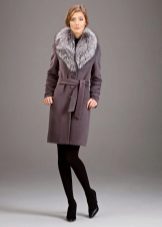
Selection tips
A coat is a rather expensive thing, especially if purchased in a branded store. In order not to get into the glaze and not to be disappointed with the purchase, you should be careful when choosing.
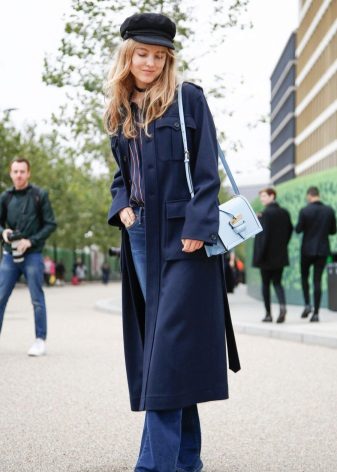
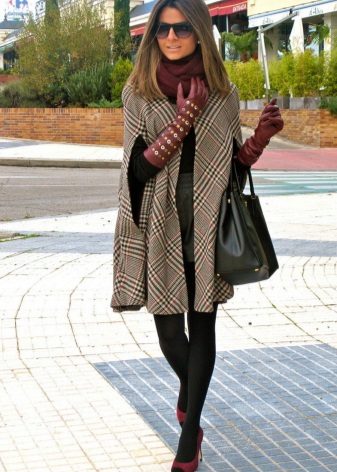
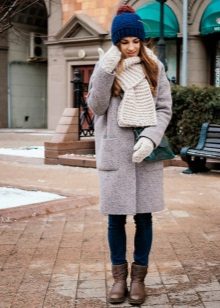

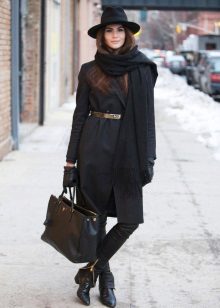
Coats, which contain more than ninety percent of the natural material, will never be very bright. Such material is poorly stained. However, natural beige and golden, chocolate, white and black colors look very nice, so do not get upset.
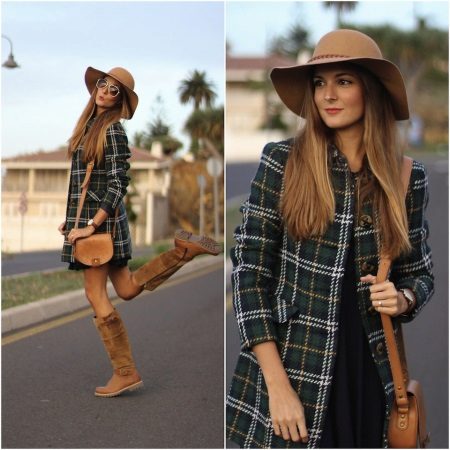
Woolen coats are widely distributed, in which up to ninety percent of the natural fibers, and all the rest are synthetic. They are cheaper, but if the wool is less than seventy percent, then with the advent of cold weather such a coat will not warm.
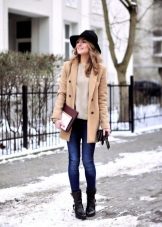
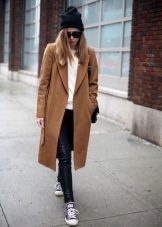
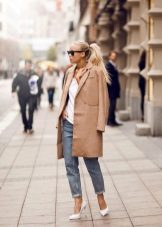
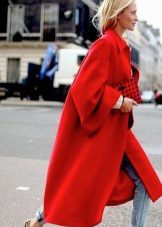
There are coats and are completely made of synthetic fabrics. They do not retain heat well, so they are more suitable for spring and early fall. But it is suitable if there is an allergy to the coat.
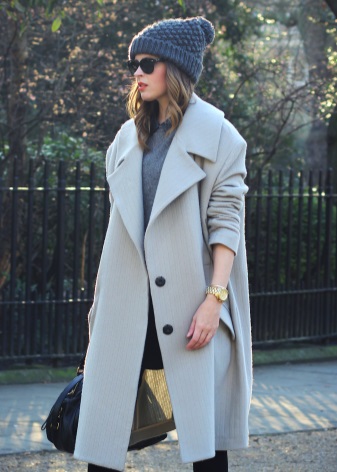
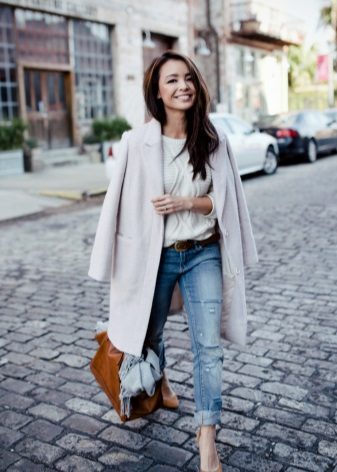
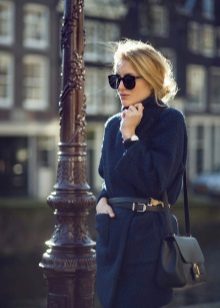
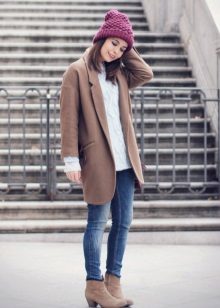
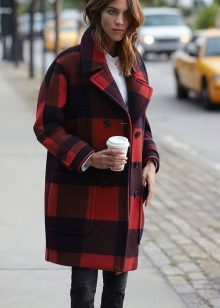
For the coat to last as long as possible, it should have dense, well-ironed seams. Of these, the thread should not stick out. The same goes for the pad seams. Thin seams can crumble and then the coat will fall apart, so be sure to measure the coat, move it with your hands.
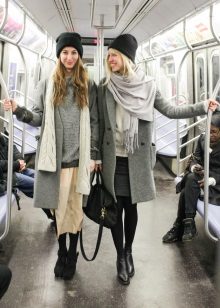
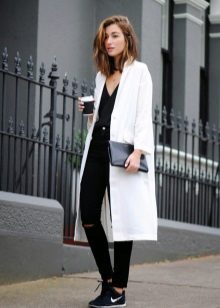

If the lining does not interfere, and no parts pull the body, then it is suitable.
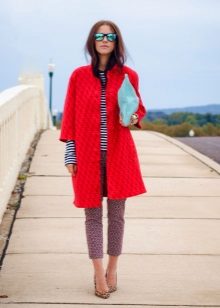
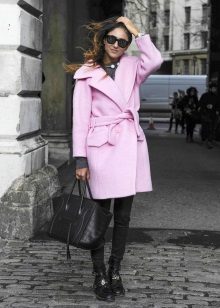
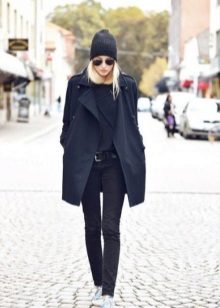
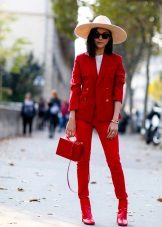


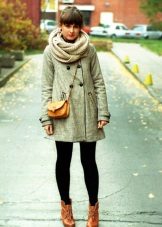
In addition, the coat should sit well on the line of the shoulders and in no case compress them. Pay attention to the length of the sleeves, they should be up to the knuckles above the fingers. This is due to the fact that when the coat is worn daily, you will need a margin for the elbow bend and shrinkage of the coat as a whole.
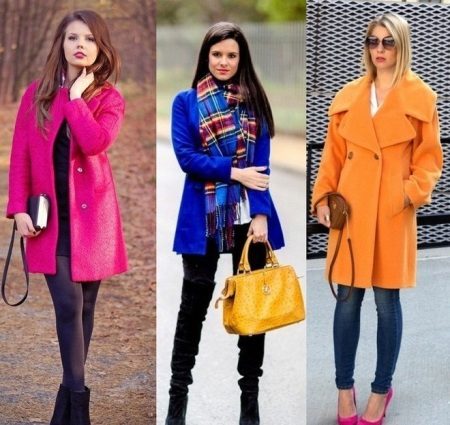
Paying attention is not only to the fabric, but also to the fasteners. They must be firmly sewn and not fall off at the purchase stage. If the buttons are duplicated from the inside by small buttons, then this is for the better.
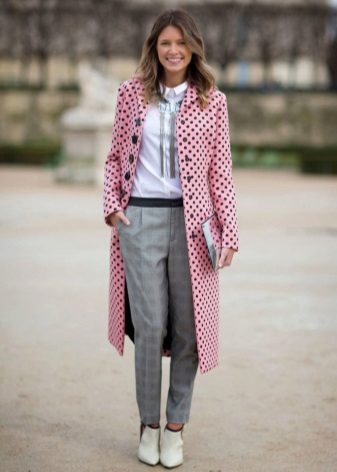
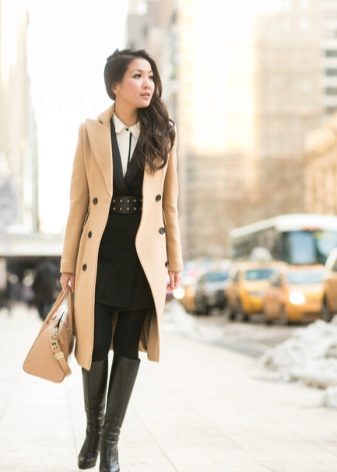
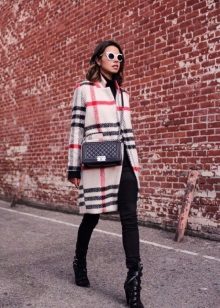
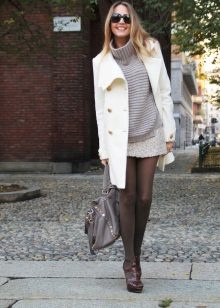
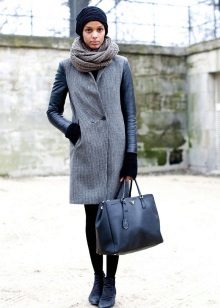
Such a technique will not allow the material to quickly deform from daily wear. If the coat is zipped, it is worthwhile to fasten it and check that the fastener does not jam anywhere.
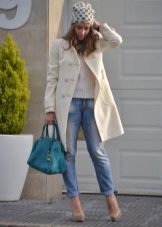
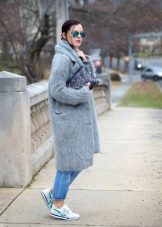
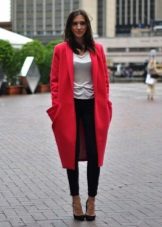
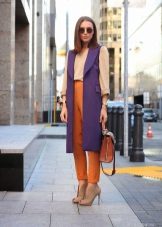
How to choose a figure?
When the figure is “triangle” (shoulders and waist are narrow, hips are wide), fitted coats with a flared bottom should be chosen. To add “volume” to the top, you can buy a model with a large collar, frills or decor.
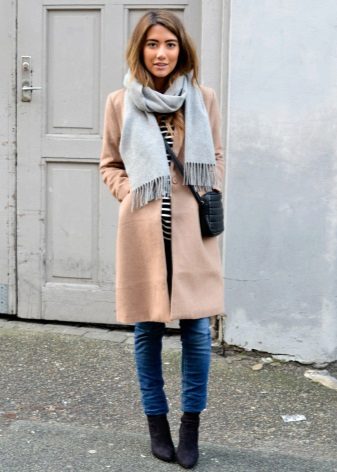
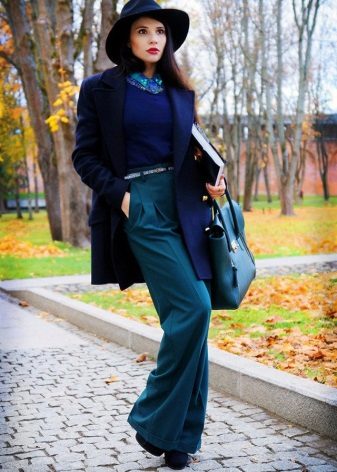
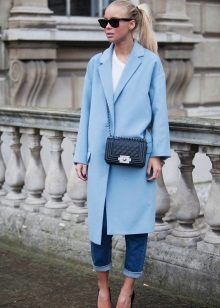
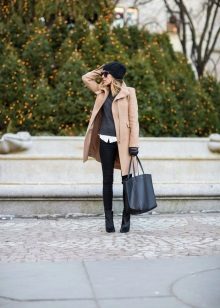
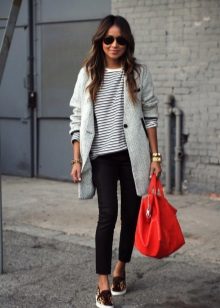
A similar style and active top should be used by those who have a pear-like figure (narrow shoulders, wide hips).
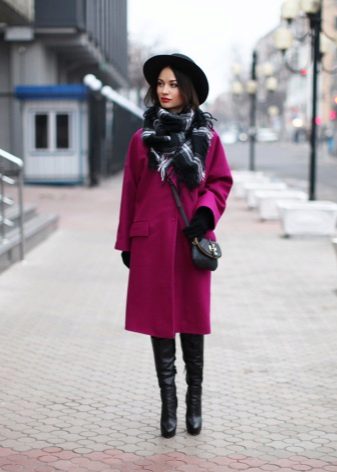
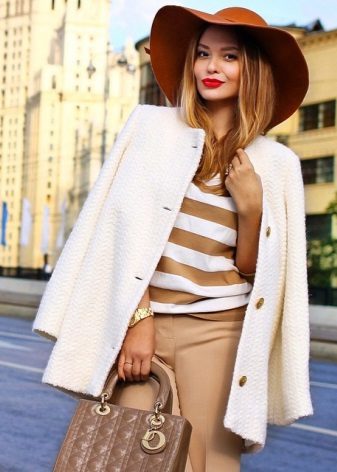
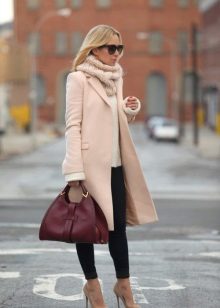
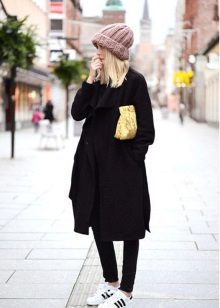
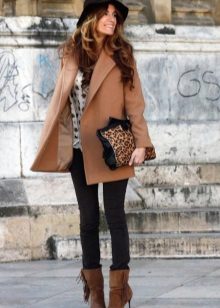
If the figure is “apple” (narrow shoulders and hips, the waist is not necessarily wide, but it looks disproportionate), then you should choose a coat with an offset waist line, asymmetric or single-breasted models.
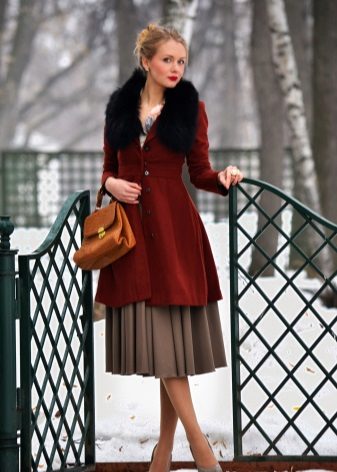

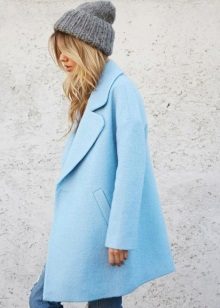
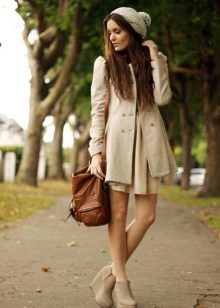
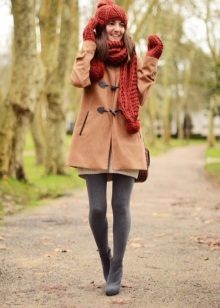
When a figure of the “rectangle” type (approximately the same width of the shoulders, waist, hips), it is worth putting on a coat with straps, patch pockets, voluminous applications, as they give more smooth lines to the silhouette.
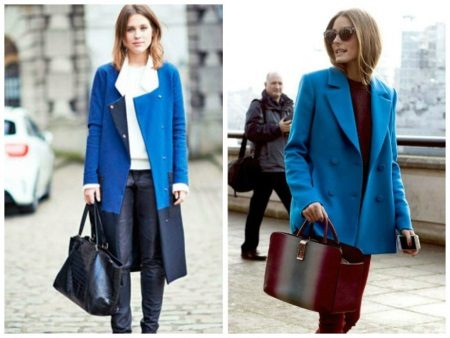
All the more fortunate are those who have an hourglass figure (approximately the same width of shoulders and hips, thin waist), because they can wear any model of coat.
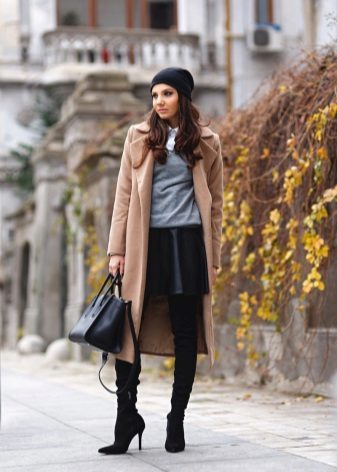
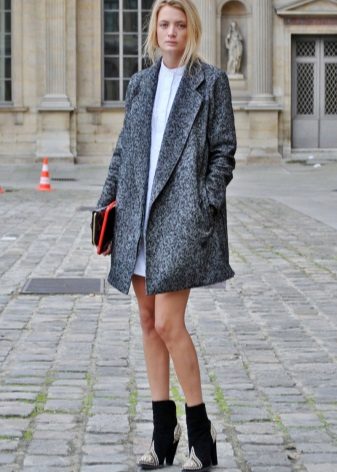

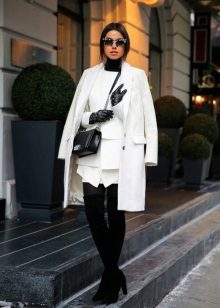

Short-haired girls are preferable to make a choice in the direction of a shortened or midi coat. Tall, you should wear fitted coats to visually divide the figure and focus on the waist.
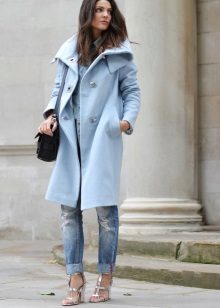

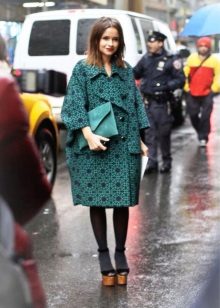
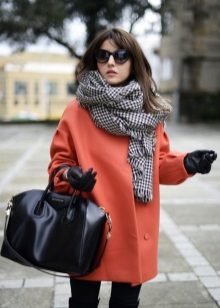

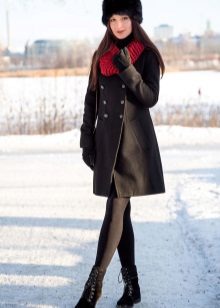
What to wear?
Volumetric, wide coats look best with tight-fitting things, for example, jeans, trousers, leggings, leggings (if the coat is sports), pencil skirts, shorts. If the style is straight, then the lines of the clothes should be the same, for example, straight dresses, skirts, wide trousers.

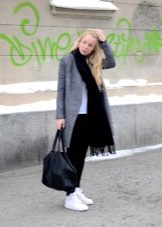
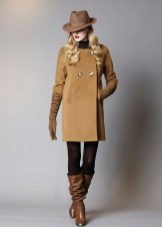
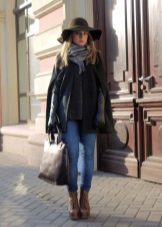
Flared down coats can be worn with flared skirts and dresses. Under the coat, depending on the weather, not only thin blouses, blouses, tops are allowed, but also warm tight sweaters, shirts, jackets.
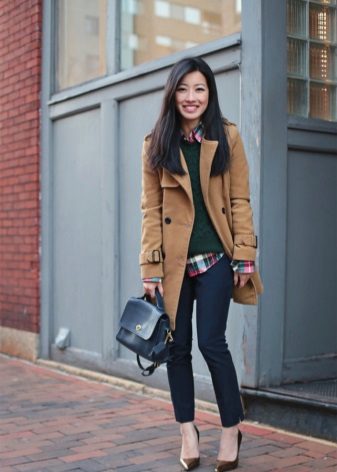

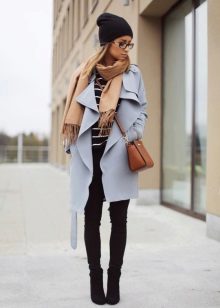
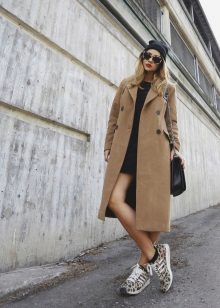
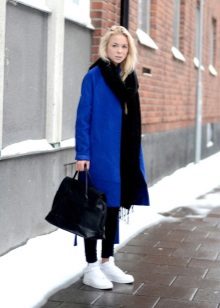
Many details (large collar, lapels, hoods, patch pockets), dark color - make the product heavier. The choice of accessories depends on this factor. For example, if the collar is already large, then the scarf should be selected thin and put on under the coat, and not outside.
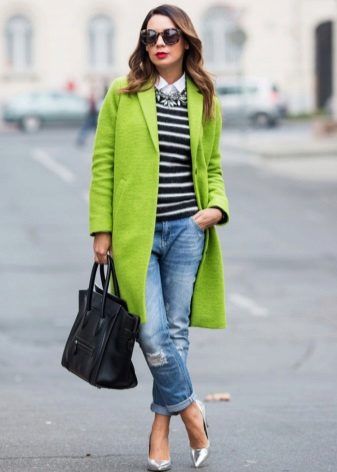
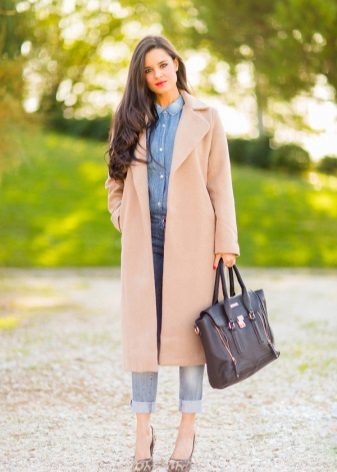

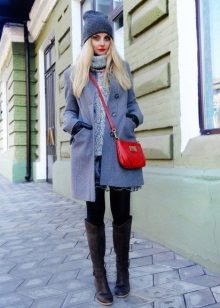
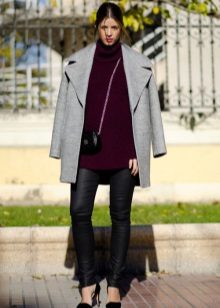
And dark coats can be balanced with light shades of companions - hats, scarves, gloves.
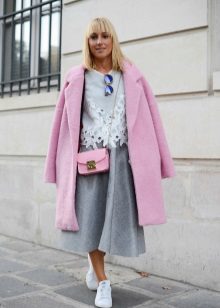

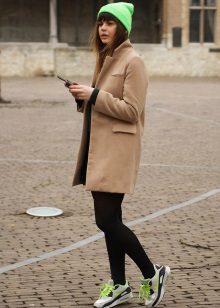
Shoes should be chosen to the general style. We are talking about boots, boots, shoes, ankle boots, boots. Whether it is worth using shoes with a heel or on a flat sole, on a platform or thin stiletto depends on the model and style.

The height of the shoe also depends on the length of the coat. The thicker the coat, the stiffer and rougher the shoes should be. Some styles, for example, oversizes, can be safely worn with sneakers, sneakers, even sneakers.
